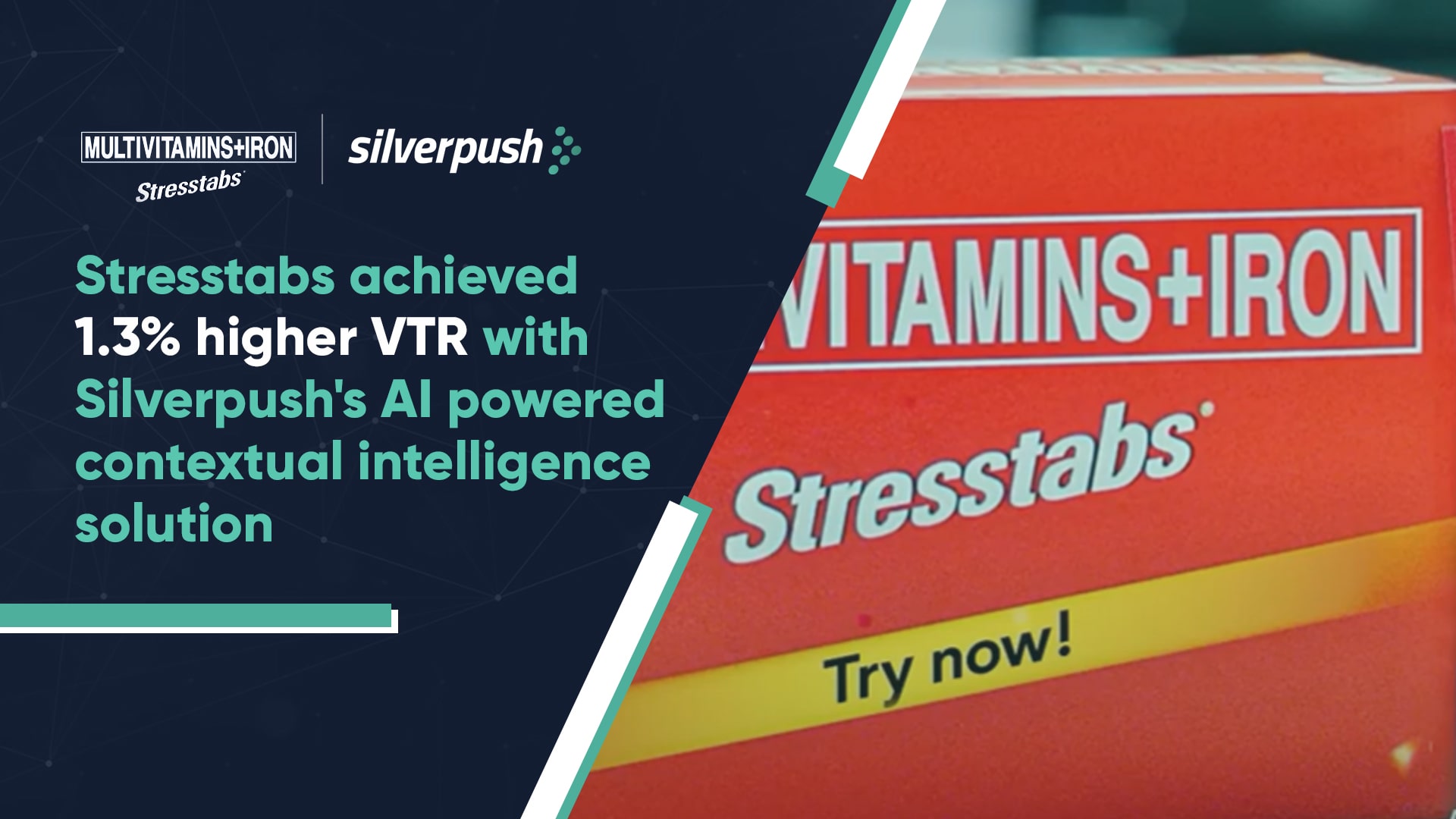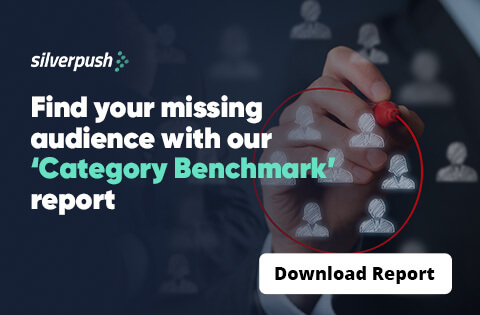The Power of Multicultural Advertising: Reaching Diverse Audiences
PUBLISH DATE: 24 May 2023
USA minority groups buying power is expected to rise from 4.2 trillion in 2020 to 7 trillion by 2025. With this significant growth, brands cannot afford to overlook the importance of targeting multicultural communities in their advertising strategies.
In this blog, we will explore why brands should focus on diversity, how they can effectively reach multicultural communities, and the benefits of doing so.
Why is Multicultural Advertising Important?
Brands aspire to capture the hearts of millions and establish a lasting brand recall as their primary objective. Yet they miss out on a larger portion of the audience.
Multiculturalism has played a significant role in this endeavor, showcasing its positive impact on our daily lives. This can be observed through the fusion of diverse cultures in ethnic enclaves found in metropolitan areas and the availability of various ethnic cuisines in supermarkets. One of the driving forces behind the market expansion in the past decade has been the multicultural consumer market, currently valued at over $5 trillion.
The corporate expansion serves as a pivotal factor in this growth, benefiting all brands. As markets expand, more consumers enter the fray, leading to increased consumption and fostering innovation by introducing new products. This, in turn, promotes higher usage and the potential for premium pricing. When executed effectively, this generates greater revenue and income, consequently enhancing purchasing power.
A renowned brand from the FMCG industry had a boost in sales in North America. Interestingly, a larger portion of their sales was accounted for by diverse communities of the region.
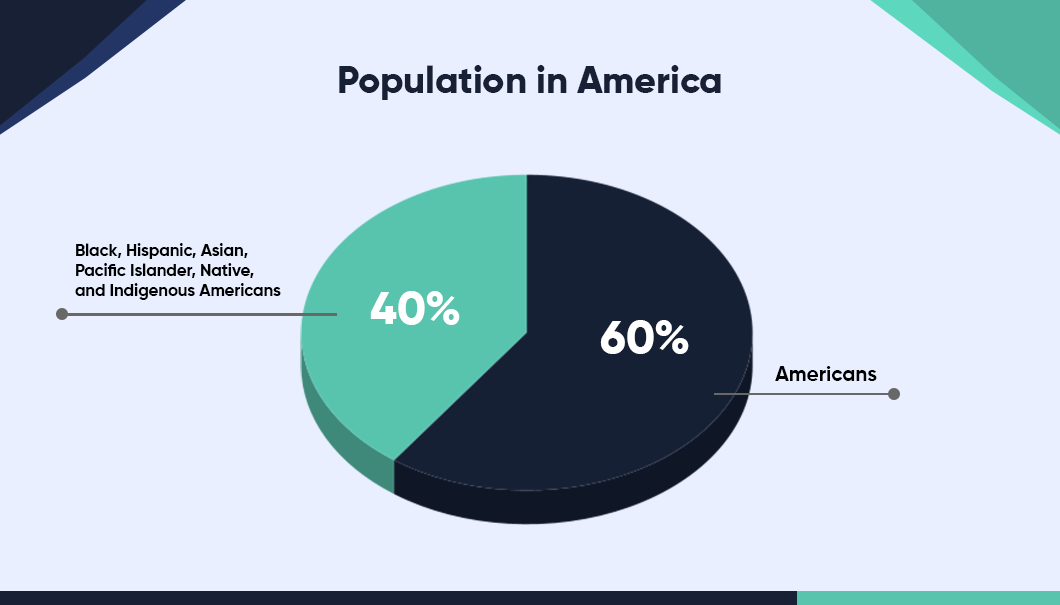
What is Multicultural Advertising?
Immigration encompasses more than mere physical mobility; it represents the dynamic exchange and interplay of diverse cultures. Each individual carries the bedrock of their identity, fostering the emergence of vibrant and multicultural communities.
Expanding Horizons: Beyond the LGBTQ+ Community
While many advertisers focus solely on the LGBTQ+ community when it comes to multicultural advertising, it’s essential to remember that diversity encompasses various ethnic groups. In the United States, Black, Hispanic, Asian, Pacific Islander, Native, and Indigenous Americans makeup 40% of the population. It is crucial for brands to recognize and target the entire multicultural communities to maximize their reach and impact.
How can Brands Reach Multicultural Communities?
The advertising arena is under evolution. The phase-out of third-party cookies has inclined advertisers towards contextual advertising. Since cross-culture targeting poses a set of challenges that are hard to overcome with conventional targeting methods, contextual targeting methods can be beneficial.
Some of the challenges are:
1. Cultural Sensitivity: Multicultural communities are sensitive towards their presence. Brands must understand their diverse cultural nuances and sensitivities. They must ensure that their message resonates with the viewer.
2. Language Barrier: Brands need to ensure that their message is tailored well according to the specific group they are targeting. Understanding the intricacies of each culture is crucial for creating effective campaigns that resonate with the target audience.
3. Limited Reach and Targeting: Traditional advertising channels often need to be improved when it comes to reaching specific multicultural audiences. Targeting these communities through one or more channels can be complex as they may cause hindrances in targeting methods.
To overcome these challenges, advertisers can leverage Silverpush’s advanced AI technology, Mirrors. This offers enhanced brand safety and suitability, allowing advertisers to reach their desired audience contextually and through different platforms.
YouTube
To begin with, the best way to reach the audience is through video advertising. Did you know, 82% of the global content consumption is from videos. With contextual video advertising, brands can easily tap into the audience as the AI offers the first context detection based on the identification of key context like brands name from metadata for granular targeting.
Open Web
Conventional targeting created voids that further created challenges for brands to reach their desired audience. But by analyzing the page’s content in real-time and combining relevant information, it provides personalized advertising, filling the gaps.
Meta
Sentiment analysis and NLP tools search countless Facebook pages to find the most contextually appropriate video material. Mirrors target high-performing sites by correlating context relevance with engagement metrics (likes, shares, comments, and subscriptions).
Brands can effectively reach their audience while respecting their privacy by utilizing contextual advertising, which capitalizes on the reader’s existing interests and aligns ads with the content they consume. This contrasts with behavioral targeting methods that can leave users feeling monitored and followed.
Conclusion
According to a survey, 64% of consumers agreed that they engaged with a brand after seeing an ad that they considered diverse or inclusive.
Multicultural communities have long-awaited recognition and representation, and they can be found across the globe. One prominent example is the city of New York in the United States. Known as a melting pot of various cultures, people from all over the world call New York home. Its remarkable diversity is one of its greatest strengths and contributes to its status as a leader in creativity and innovation. Similarly, Toronto in Canada and London in Europe are home to diverse communities.
When it comes to advertising, it is crucial to recognize that multicultural communities should not be targeted as a one-time or occasional effort. Instead, brands should strive to engage with these communities consistently throughout the year. These diverse communities represent the future audience, and establishing a meaningful connection with them is essential to staying ahead of the curve in an increasingly diverse world.
By understanding and embracing the multicultural nature of society, brands can tap into new markets, foster inclusivity, and build lasting relationships with diverse audiences.
Silverpush Paves the Way in Revolutionizing Contextual Advertising with Generative AI Technology
PUBLISH DATE: 18 April 2023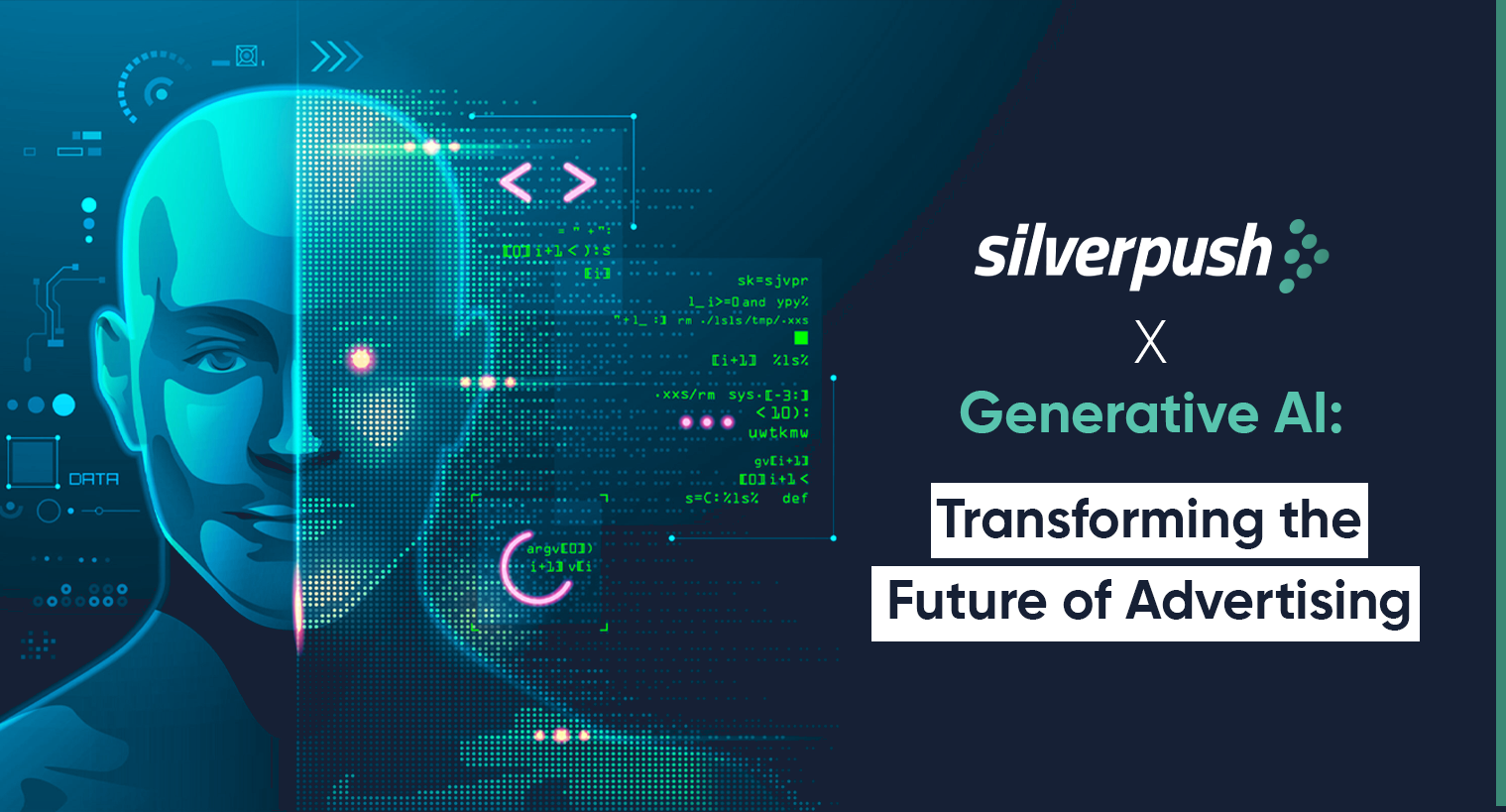
With the digital advertising industry rapidly evolving, it’s important to keep up with the latest trends and technologies.
Contextual advertising, which has been a game-changer for brands to maximize their ROI, has helped them reach their target audience in a more relevant and personalized way.
But, with the advent of newer technologies, even this life savior of brands after the apocalypse of third-party cookies requires an upgrade.
Generative AI, which has taken the world by storm has revolutionized work and creativity, offering numerous benefits and opportunities.
While many industries have already incorporated Generative AI into their business, contextual advertising is close and is also exploring how this technology can benefit them.
How will Generative AI Pave the Way for Contextual Advertising?
Generative AI is a powerful technology that has the potential to transform the way advertisers reach their target audiences.
Unlike traditional AI models, which rely on historical data, Generative AI can create new and unique data sets, enabling advertisers to expand their reach to audiences that were previously out of reach using traditional methods.
This technology can identify patterns and correlations between seemingly unrelated data points, resulting in a more personalized and relevant advertising experience for users.
With the ability to generate new data sets and identify new audience segments, Generative AI is opening up new possibilities for advertisers to reach their target audiences with greater accuracy and efficiency.
Silverpush X Generative AI: Changing the Advertising Game for Brands
In an age where privacy concerns are at an all-time high, relying on third-party cookies to reach relevant audiences has become increasingly challenging.
Silverpush, which is a hyper-contextual advertising company has incorporated Generative AI into its contextual AI platform- Mirrors to provide brands with an effective solution to target without the use of cookies.
The launch of a contextual planning tool powered by Generative AI represents a significant advancement in the capabilities of Silverpush’s flagship product, Mirrors.
By incorporating next-generation AI capabilities, the tool further enhances Mirrors’ contextual offering, addressing the challenges of cookieless targeting and revolutionizing the digital advertising space.
How will it Benefit Advertisers?
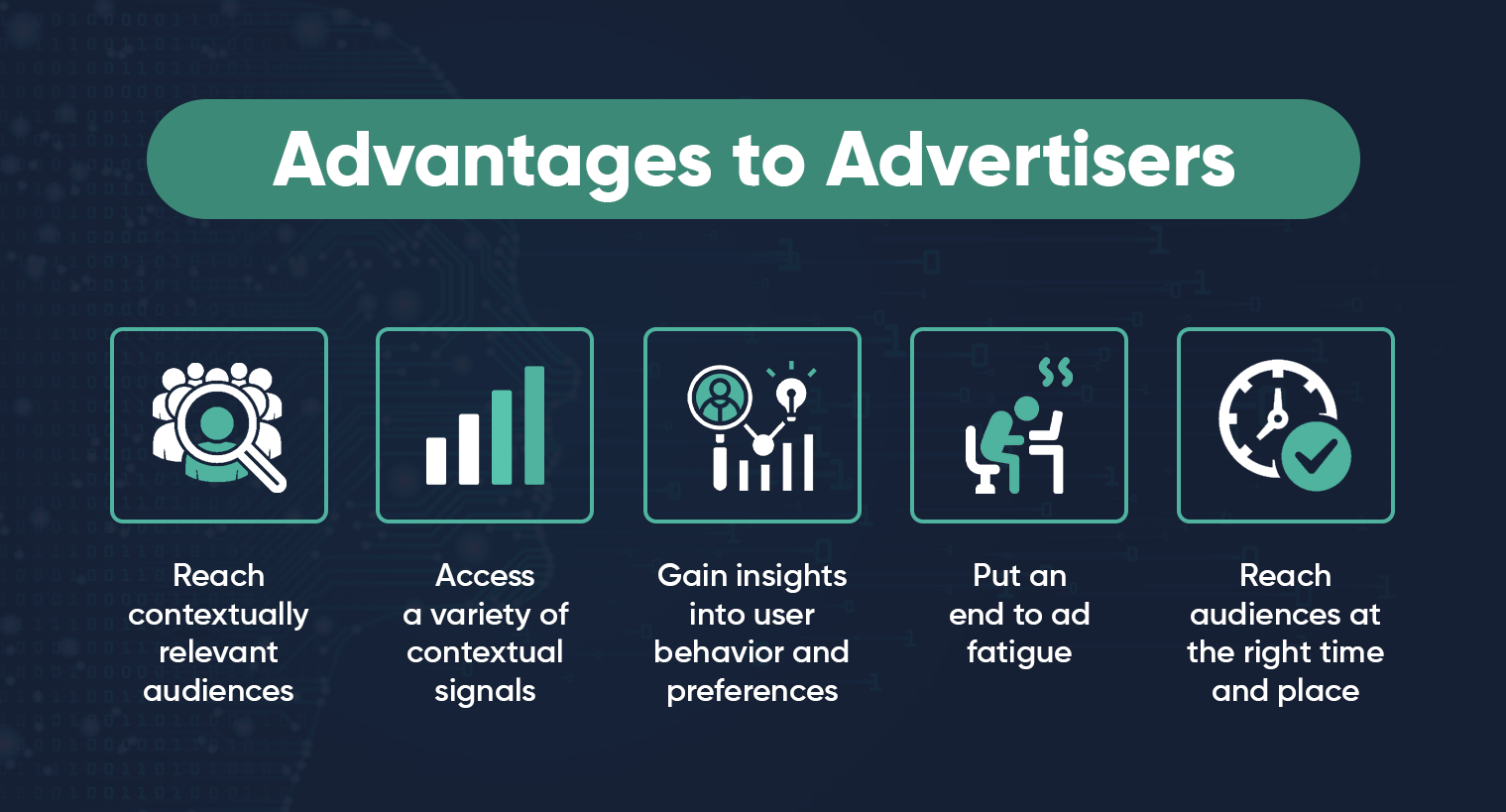
1. This tool will enable advertisers to identify contextually relevant audiences without relying on third-party cookies.
2. The AI-powered contextual platform, Mirrors, will give access to a wide range of contextual signals that can be used to transform brands’ ad targeting strategies.
3. Mirrors, powered by Generative AI, allow advertisers to gain insights into user behavior and preferences, leading to more precise targeting and a better user experience.
4. Generative AI can also solve the problem of users getting tired of seeing the same ad too many times (ad fatigue) and being shown too many ads (frequency capping), which can make them less likely to engage with the ads.
5. By creating unique data sets and identifying new audience segments, advertisers can ensure that their ads are reaching the right users at the right time, without overwhelming them with too many ads.
Final Words
The integration of Generative AI into Silverpush’s contextual AI stack marks a significant advancement in the field of digital advertising. With this technology, advertisers can surpass the restrictions of traditional targeting methods and provide users with more personalized, relevant, and effective ad experiences. But, there’s more to it than you think. Stay tuned for our next blog on Gen AI, where we dive deeper into the potential of this groundbreaking technology and reveal some major possibilities for advertisers.
How Contextual Advertising is Driving Sales in the Automotive Industry
PUBLISH DATE: 11 April 2023
Challenging. It is the correct word to describe how brands consider advertising in the automotive sector.
This is mostly due to the long purchasing cycle by consumers involving a large chunk of money coming out of their pockets.
Despite the challenges, automotive brands cannot afford to miss out on the immense consumer spending in this industry. In fact, the automotive industry is one of the largest spenders on advertising worldwide. According to a report by Statista, in 2020, the automotive industry in the United States alone spent a whopping 12.42 billion U.S. dollars on digital advertising.
Contextual advertising can be a highly effective strategy for automotive brands to reach their targeted audience in the right place, at the right time, and with the right message. This approach allows advertisers to target potential customers based on their interests, online behaviors, and purchase intent, without using their personal data.
What’s Unique About the Automotive Advertising Industry?
Before delving into automotive advertising strategies, it’s crucial to understand the unique nature of this industry.
Vehicles are a significant financial investment, and consumers often spend a considerable amount of time in the consideration phase. In fact, car buyers spend an average of almost 14 hours online during their research and visit around 4.2 websites before making a purchase decision.
As the buying journey almost always starts online, reaching potential customers with a programmatic campaign is essential long before they step foot in a car dealership.
Brands who want to reach their target audience need to first understand them. The target audience can vary depending on the type of vehicle being advertised. For instance, ads for luxury cars are targeted toward individuals with higher incomes, while family-friendly car ads are often aimed at individuals with lower to middle incomes who have families and need practical transportation options.
Also, the customer journey is an entirely complex process where customers rely on different platforms to get information about the car they are looking for.
For instance, a person interested in buying a car may watch advertisements for cars on Connected TV (CTV) using their mobile or desktop devices. To learn more about a specific car, they may browse online through OpenWeb to gather information about the car’s engine, features, and other details.
Additionally, they may ask for recommendations or advice from their friends on social media platforms like Meta to gain insights from other people’s experiences. By using multiple devices and platforms, the person can make a more informed decision when choosing a car that suits their needs and preferences.
This is where advertisers can leverage the situation to reach their target audiences at the right time and place when those audiences are most likely to be receptive to their ads and engage with them.
Contextual advertising is a powerful tool in the automotive industry, as it enables brands to understand the context of a webpage and tailor their advertising message accordingly. This can capture the customer’s attention at the right moment and potentially influence their purchasing decision. By leveraging contextual data and creating relevant and engaging ads, brands can make an impact and connect with potential customers in a competitive and challenging industry.
Maximizing Advertising Relevance with Mirrors’ Hyper Contextual Advertising
Silverpush’s flagship product – Mirrors is an AI-powered hyper-contextual technology that watches and listens (word-by-word), allowing you to target audiences with both precision and scale-ultimately driving better brand outcomes.
It ensures that your messaging reaches your users, during key decision-making moments which further amplifies the message and taps into users’ current state of mind. Thus, driving higher performance and efficiency for some of the largest auto brands in the world.
One of our major auto brands benefited greatly from our next-gen hyper-granular context targeting powered by AI to leverage what auto consumers are watching on YouTube and drive trust and personal connection with a captive audience.
Plan an Omnichannel Marketing Strategy with Mirrors
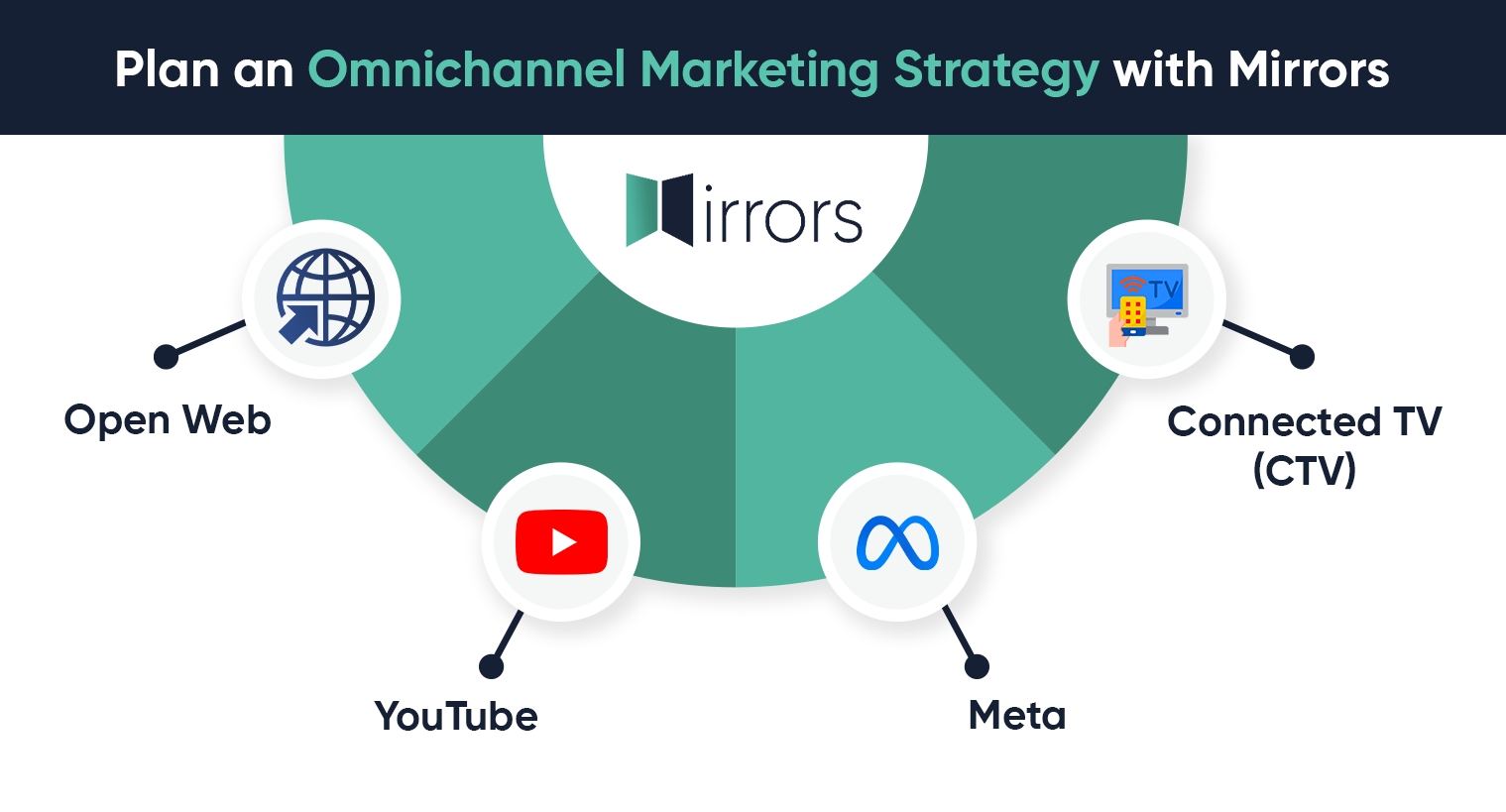
Mirrors, the next-generation AI technology, offers brands a multi-platform solution to advertise across various channels, thereby extending their reach and amplifying their marketing efforts.
1. Open Web
Targeting audiences based on website content. Mirrors can also display ads based on the content of the user’s website. For example, if a user is reading an article about eco-friendly cars, contextual advertising can display ads for hybrid or electric cars.
2. YouTube
~ 90% of global shoppers surveyed say they discovered new brands or products on YouTube and 40% say they have purchased products they discovered on YouTube. Watch time of car videos on YouTube has grown by more than 65% in the past two years. When looking to buy a new car, consumers often turn to video research. Auto marketers can use this opportunity to reach potential buyers who are actively considering a purchase, even if they are not familiar with their product. Over 75% of auto shoppers say that online video has influenced their shopping habits and purchases.
3. Meta
By leveraging Artificial Intelligence (AI), Machine Learning (ML), and Natural Language Processing (NLP) models, Mirrors carefully selects and processes brand-safe Facebook pages to extract contextual signals that enable the delivery of real-time, in-the-moment ads with exceptional performance. This advanced technology empowers brands to serve highly relevant ads while ensuring brand safety on Facebook.
4. Connected TV (CTV)
Mirrors analyzes content, creates custom ad segments, and uses semantic analysis to display ads in premium and relevant CTV video inventory, avoiding misplacement based on user emotions and behavior.
Exploring Real-World Use Cases of Mirrors
1. How Mirrors Helped an Automotive Brand in Competitor Conquesting
An automotive car brand leveraged Mirrors’ AI technology to identify cues related to key features of its competitors’ vehicles across different segments. With this information, the brand effectively targeted YouTube content containing these cues and seamlessly insert their brand messaging. By utilizing Mirrors, the automotive car brand efficiently and strategically reach its target audience while also gaining a competitive edge over its rivals.
2. Mirrors Enabled an Automotive Brand to Achieve Complete Brand Safety in Ad Display
Our client, an automotive car brand successfully utilized Mirrors to maintain brand safety while advertising on digital platforms.
Mirrors’ pre-defined visual and audio context identification allowed us to exclude videos that did not align with our core values. By conducting analysis, our AI became even more selective about when and where to block content, thus ensuring the perfect balance between brand protection and suitability.
Our brand safety standards, fully aligned with industry standards such as GARM, COPPA, CCPA, GDPR, and LDA compliance, were enhanced without over-blocking. Thanks to Mirrors, the automotive car brand effectively maintained brand safety while simultaneously maximizing our reach and engagement with our target audience on YouTube.
3. Automotive Brand Utilizes Analysis for Contextual Ad Placement
Mirrors helped an automotive brand reach and engage with its target audience interested in automobiles. By leveraging their competitors’ brands through trigger identification based on brands (of Hyundai, Chevrolet, Nissan, etc.), brand ambassadors, influencers, car-tech reviews, automobile showrooms, test drive videos, and more, Mirrors maximized the brand’s exposure in the market.
Through Mirrors’ advanced AI technology, the visual triggers were analyzed and ads were at the right place and moment, effectively targeting the relevant audience.
How Can Brands Benefit from Mirrors’ Hyper Contextual Advertising Technology?

Get Started With An Omni-Channel Marketing Strategy for Your Automotive Advertising
The greatest challenge for marketers in the auto industry is driving users through the often lengthy path to purchase. Since people today are online on a variety of devices, and using a variety of channels, it’s crucial to have coverage across multiple digital environments.
Multi-channel targeting enables advertisers to reach users across different platforms and channels. This helps a campaign achieve greater reach by capturing users wherever they are online.
Ready to drive auto advertising performance? Fill out the form on your right and your Silverpush representative will contact you soon with more information on how to get started.
The Demise of Third-Party Cookies: Can AI Advertising Fill the Void?
PUBLISH DATE: 15 March 2023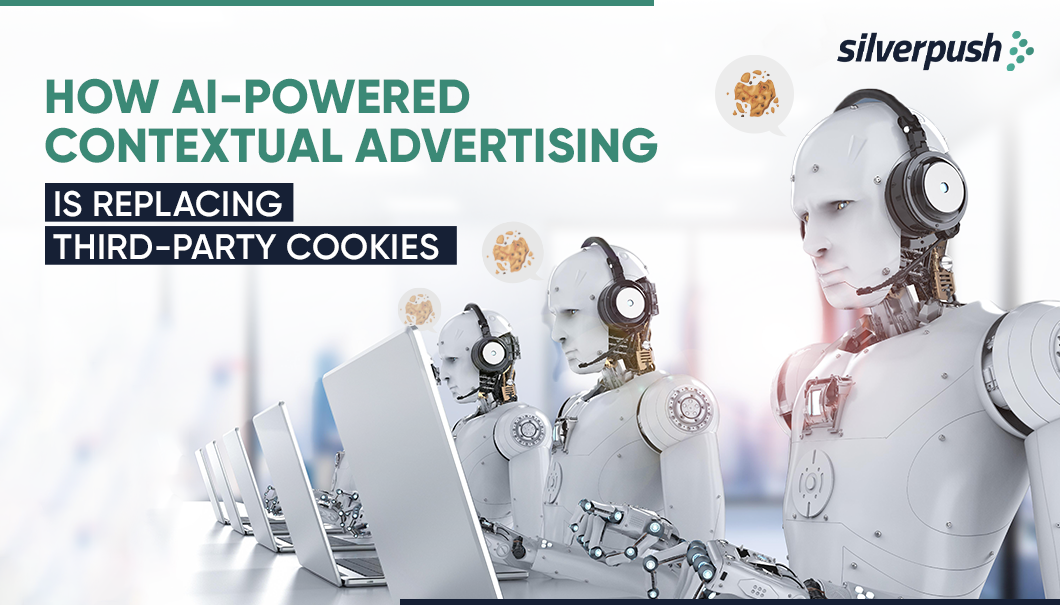
As third-party cookies crumble, AI advertising is gearing up for its time in the spotlight – get ready for the rise of the machines in the ad tech industry!
The importance of third-party cookies can be well understood by digital marketers who rely on these small pieces of information to serve personalized ads to their audiences.
The usage of user data without their consent or knowledge has sparked significant debates surrounding consumer privacy, with users, legislators, and companies all expressing concerns about the potential impact on individual confidentiality.
Although cookies have been valuable for advertisers and marketers, their usage is now being closely examined as users demand more control over their online data, and companies face increasing pressure to prioritize consumer privacy. Major web browsers like Mozilla Firefox and Safari have already banned third-party cookies, and Google Chrome will soon follow suit.
To navigate the post-cookie world, advertisers will need to explore alternative options like Artificial Intelligence (AI), which is likely to replace cookies. AI-powered contextual advertising has emerged as a powerful tool for innovation, with companies using it for management, robotics, and marketing.
What Challenges are Faced by Marketers Due to Third-Party Cookies?
Ad tech companies often use a technique called fingerprinting to track users and deliver personalized ads. Fingerprinting relies on third-party cookies to generate user-specific browser ID tags.
When a user accesses a website with a cookie-based ad, a tracking pixel embedded in the ad collects the user’s browser tag and sends it to the advertiser’s server. Ad tech companies then use this information to develop user profiles and track browsing history, purchases, and other personal information.
However, users often have little knowledge of what personal information is collected and have limited control over preventing unwanted data collection unless they manually disable cookies on their browsers.
Eliminating the Use of 3rd Party Cookies
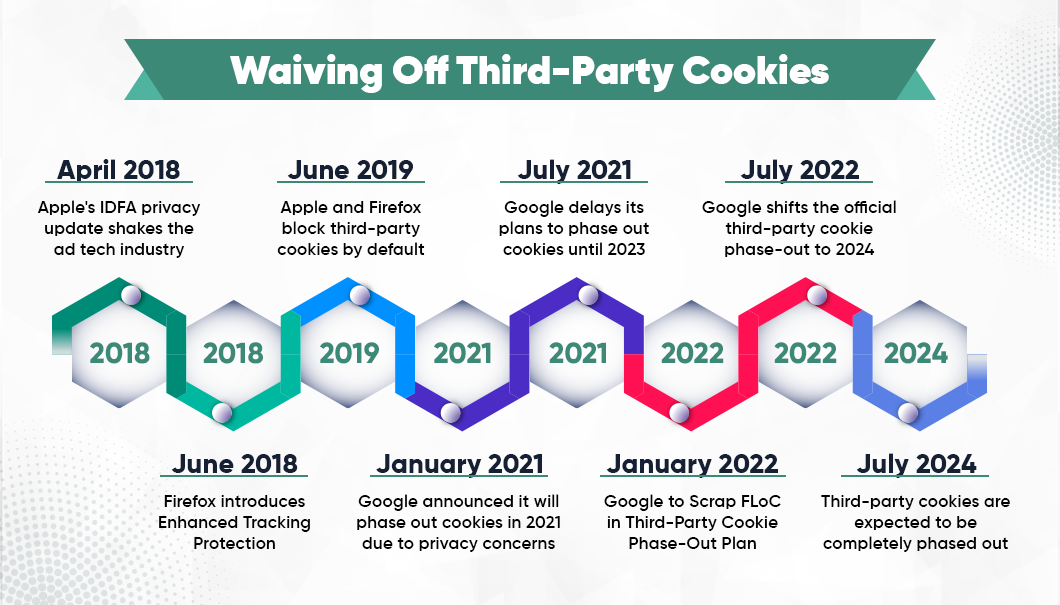
As privacy concerns grow, more companies are opting out of using third-party cookies. Major web browsers like Safari and Firefox have already blocked cross-tracking third-party cookies, and Google plans to phase them out on Chrome by 2024 to address user demands for greater privacy, transparency, choice, and control over their data.
Advertisers, who rely heavily on third-party cookies for data collection, will be significantly impacted by this change and must find new ways to access similar sets of data.
The most comprehensive data regulation to date is the General Data Protection Regulation (GDPR), which came into effect in 2018 within the European Union. It has set a high bar for data protection standards globally, as it emphasizes the importance of user consent and data transparency, putting greater control over personal data in the hands of users.
The Future of AI Advertising: Moving Beyond Third-Party Cookies
With the phasing out of third-party tracking cookies, advertising agencies are turning to contextual advertising as a strategy for targeting users based on their online experience categories, rather than behavioral advertising. Contextual targeting is being seen as a brand-safe, future-proof, and successful cookieless targeting option.
According to market data, the global contextual advertising market is predicted to reach $376.2 Billion by 2027, indicating the increasing popularity of this strategy.
Companies worldwide are redirecting their marketing resources toward developing a strong contextual strategy to adapt to the changing landscape of digital advertising.
Statistics that highlight the importance of contextual advertising:
1. Context is so powerful that 49% of brand marketers are looking to contextual advertising to replace cookies.
2. 79% of consumers are more comfortable seeing Contextual than behavioral ads.
3. Between 2020 and 2027, contextual advertising spending is expected to grow 13.3 percent annually.
4. 49% of US marketers surveyed are using contextual marketing today.
5. In the UK, 32% of marketers use contextual marketing, while 36% use demographic targeting.
Silverpush Leads the Way in AI-Powered Contextual Advertising for a Cookieless Future
As the digital advertising industry transitions to a cookieless future, contextual targeting is emerging as a powerful solution for advertisers looking to engage with their target audience.
Silverpush, one of the leading ad tech companies in the world recognized the limitations of third-party cookies years ago and developed their AI-Powered solution, Mirrors, which has been providing contextual advertising solutions on platforms like YouTube, OpenWeb, Meta, and CTV since 2012.
Mirrors use privacy-safe and contextual targeting solutions to deliver personalized ads to the target audience without relying on their data.
What Makes Mirrors Unique?

Mirrors’ AI-powered technology identifies key contexts and other factors for more precise targeting. Its unique custom identifying capabilities ensure that reach is not duplicated, and a unified approach is used for content-aligned ad placement, brand safety, and custom brand suitability.
The ads are placed in a brand-safe environment and are relevant to the brand, ensuring a positive and effective advertising experience for both the advertiser and the audience.
If you’re interested in learning more about how Silverpush can help you prepare for the cookieless future and advertise successfully, fill out the available form on the right and our team will reach out to you.
Targeting Back-to-School Shoppers with Contextual Advertising
PUBLISH DATE: 07 March 2023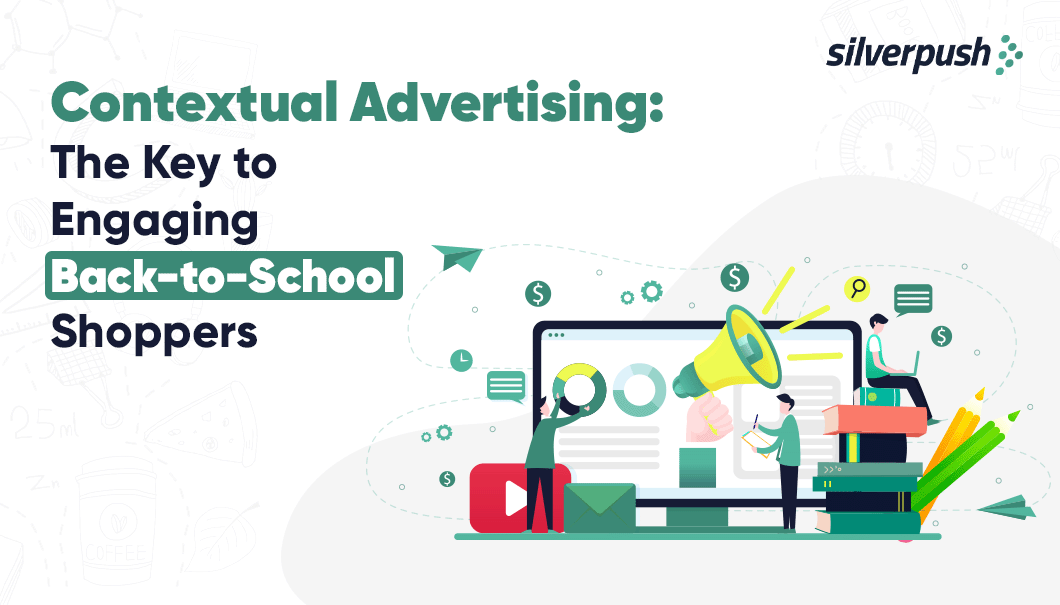
Want to get straight A’s in your back-to-school campaigns? Contextual advertising can help!
It’s not just students who are excited about the back-to-school season; the outlook for marketers is positive too.
Ad spending during the back-to-school season in 2022 was approximately $110.7 billion, and it’s expected to increase this year, presenting a massive opportunity for advertisers to connect with their target audiences.
However, the question remains: how can marketers effectively reach their target audiences during this busy season?
With the ban on third-party cookies, contextual advertising has become one of the most preferred targeting methods. This presents a huge opportunity for brands during the back-to-school season to reach their relevant audience at the right moment and place, leading to successful campaigns.
In this post, we’ll share how brands can leverage contextual targeting methods to deliver more effective campaigns that reach the right people in high-impact environments.
What is the Back-To-School Season?
The back-to-school season marks the time just before the start of the new academic year when students and teachers return to school after the summer break.
This season usually begins in August or September in many countries, including the United States, Canada, and parts of Europe, and signifies the start of the academic year for numerous schools and universities.
During this time, students and parents typically purchase new school supplies, clothing, and backpacks in preparation for the upcoming school year. As such, the back-to-school season is a crucial time for advertisers as it signifies a significant period of spending for parents, students, and educators alike.
How can Brands Leverage the Back-to-School Opportunity to Reach their Relevant Audience?
The back-to-school season is a significant opportunity for brands to connect with consumers who are preparing to return to school, college, or university.
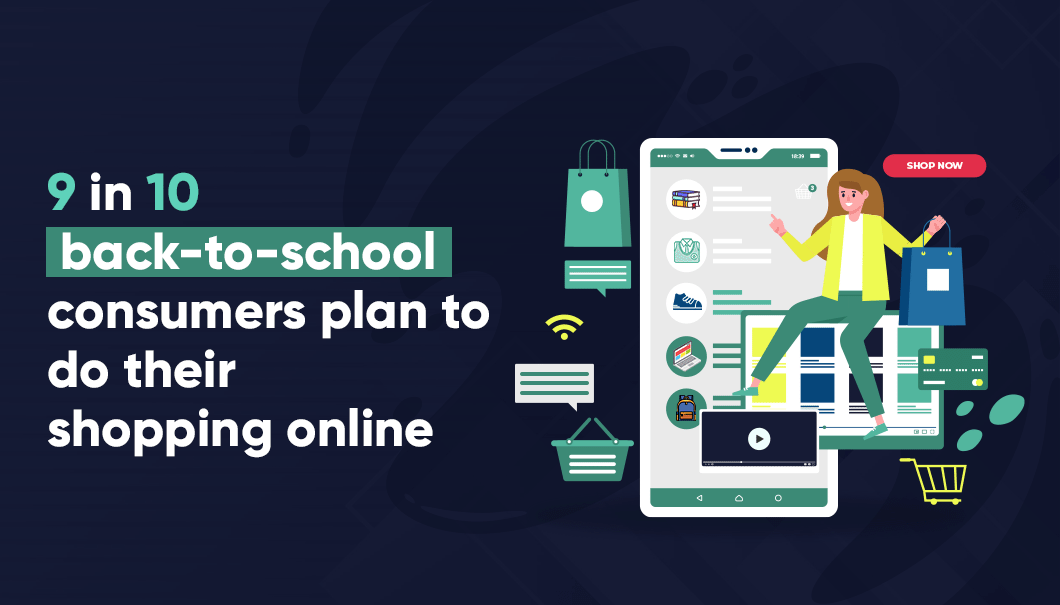
Research indicates that contextual ad targeting influences purchase decisions, with 93% of back-to-school consumers finding it important that ads they see are relevant to the content they are viewing.
Additionally, 72% of back-to-school consumers typically consume back-to-school content on social media, and 60% find online advertising helpful in making their purchasing decisions.
To effectively leverage this season, advertisers should focus on certain categories of products, such as school supplies, technology, and clothing, and target specific demographics, such as college students, high school students, or parents with school-aged children.
Advertisers may utilize a variety of channels to reach their target audience, including video advertising, social media advertising, display advertising, and more.
However, it’s even more critical to be available on the platforms where the majority of your audience is. By creating relevant and impactful campaigns that reach the right people in high-impact environments, brands can successfully tap into the back-to-school market and connect with their target audiences during this critical period.
Be Present Where your Audience Spend Time Online
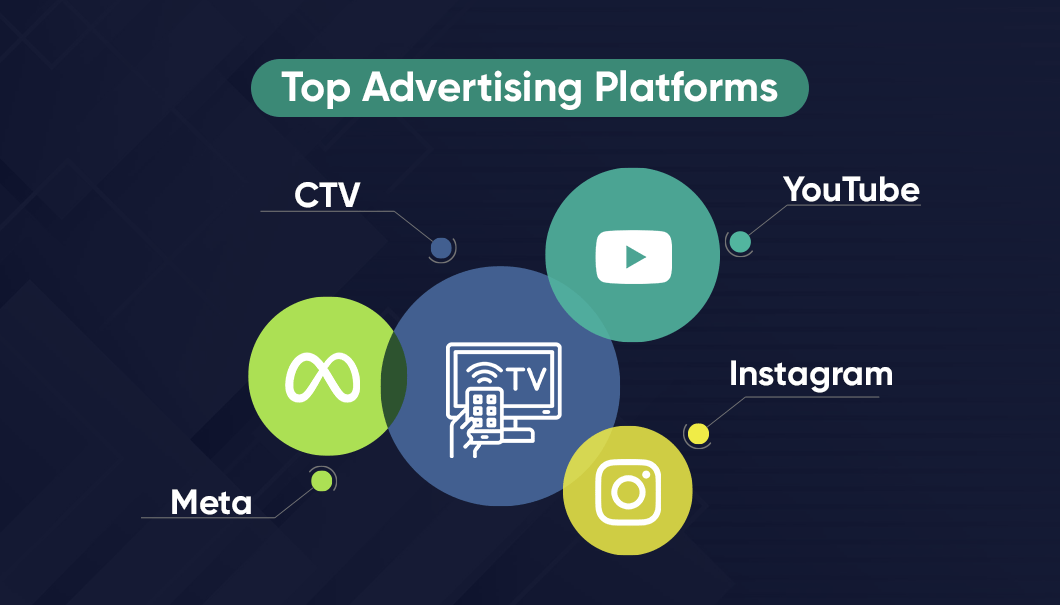
In today’s digital age, understanding consumer habits is crucial for brands looking to capture the attention of their target audience during the back-to-school season.
To be successful, it’s essential to know where parents and students are spending their time and be present on those channels. In recent years, there has been significant growth in the adoption and use of different platforms and channels like CTV and OTT advertising. Streaming, for example, has increased 266% globally in the last three years.
Popular social media channels like Meta, Instagram, and YouTube, with 1.7 billion unique monthly visitors, are also highly effective platforms for reaching out to consumers during the back-to-school season.
It’s important to stay up-to-date with emerging channels and their usage patterns to leverage them effectively when running marketing campaigns. Creating a multi-channel strategy that encompasses native, display, video, and connected TV (CTV) advertising can help brands reach parents, teachers, and students throughout the entire funnel, creating a cohesive story across channels.
In summary, brands that understand consumer behavior and adopt a multi-channel approach can effectively leverage the back-to-school season to reach their target audience and promote their products and services.
How Can Silverpush’s AI-Powered Contextual Targeting Technology Help?
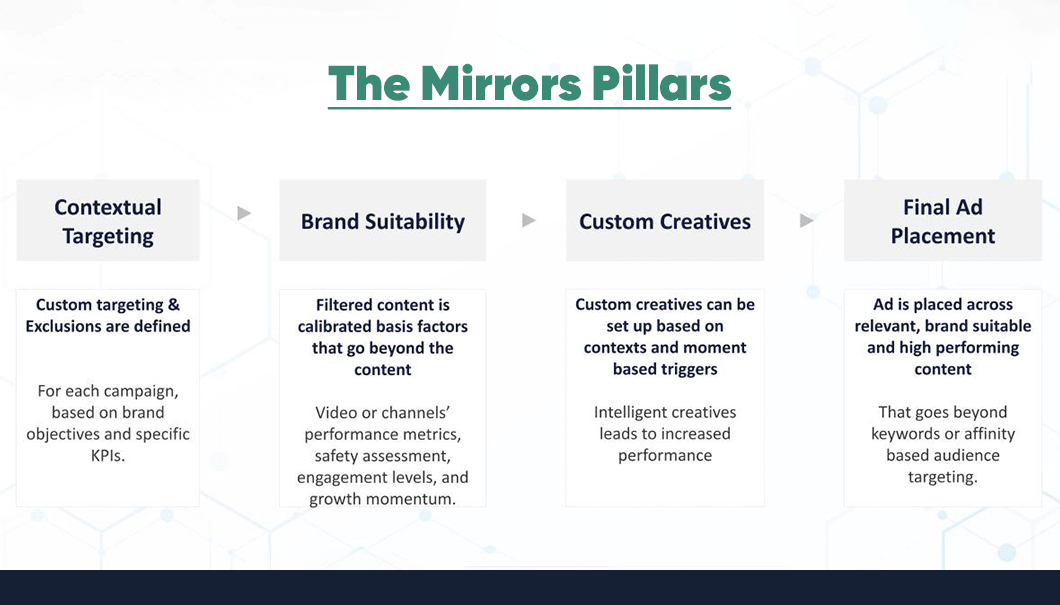
Silverpush’s flagship product, Mirrors is an AI-powered contextual targeting technology that helps brands connect with their target audience during the back-to-school season.
This season is a time when parents, students, and teachers are actively searching for products such as shoes, makeup, books, stationery, clothing, footwear, electronics, furnishings, and cleaning supplies.
Mirrors uses advanced contextual technology that can identify celebrities, brands, objects, and actions to deliver ads to a brand-safe environment.
By using contextual targeting, Mirrors ensures that ads are delivered to the right audience at the right time and place, without the need to rely on personal data.
This technology provides a nuanced level of targeting, enabling brands to place back-to-school ads on pages that align with the content their target audience is engaging with.
Additionally, Mirrors’ custom contexts identification capabilities ensure that reach is not duplicated, and a unified approach is followed for content-aligned ad placement, brand safety, and custom brand suitability.
By leveraging Silverpush’s Mirrors technology, brands can maximize the impact and effectiveness of their back-to-school campaigns and connect with their target audience in a meaningful way.
The Rise of Programmatic Advertising: Top 5 Trends Shaping the Industry
PUBLISH DATE: 28 February 2023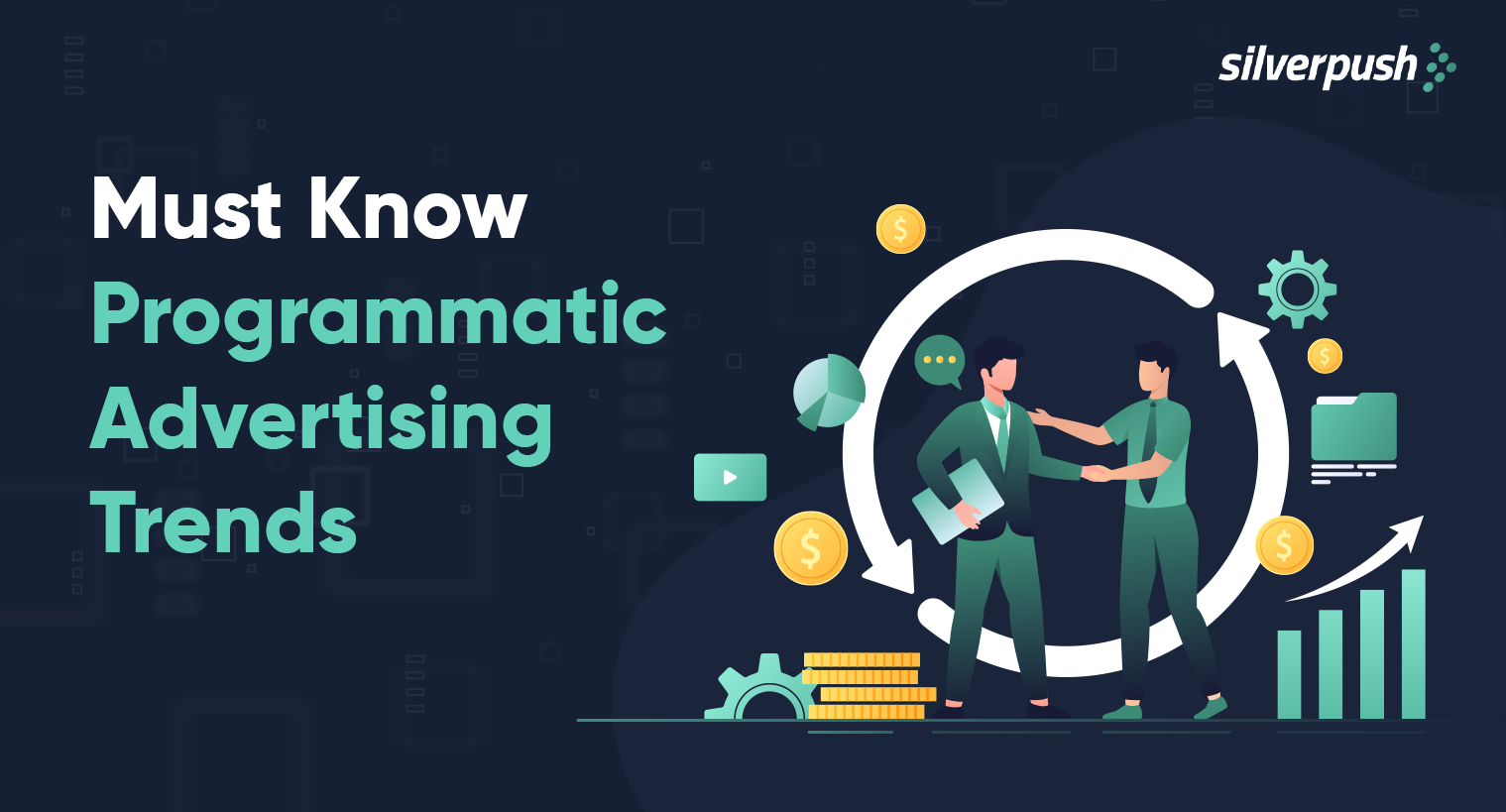
Want to know where programmatic advertising is headed? Check out the blog which talks about the top 5 programmatic advertising trends to keep an eye on, including the rise of connected TV, the importance of privacy and transparency, and more.
Programmatic advertising has revolutionized the world of digital marketing by utilizing automation to buy and sell digital ad space. This approach has replaced the traditional manual process that relied on human interaction and negotiation between publishers and marketers.
The use of data-driven strategies has enabled programmatic advertising to streamline and accelerate ad buying processes, resulting in increased campaign efficiency.
Recent estimates indicate that programmatic advertising generated 418 billion U.S. dollars in 2021 and is projected to reach 725 billion by 2026. Given these impressive figures, it’s natural to wonder if programmatic advertising is the future of advertising.
To answer this question and stay up-to-date with the latest trends, let’s take a closer look at the new trends in programmatic advertising.
5 Recent Programmatic Advertising Trends
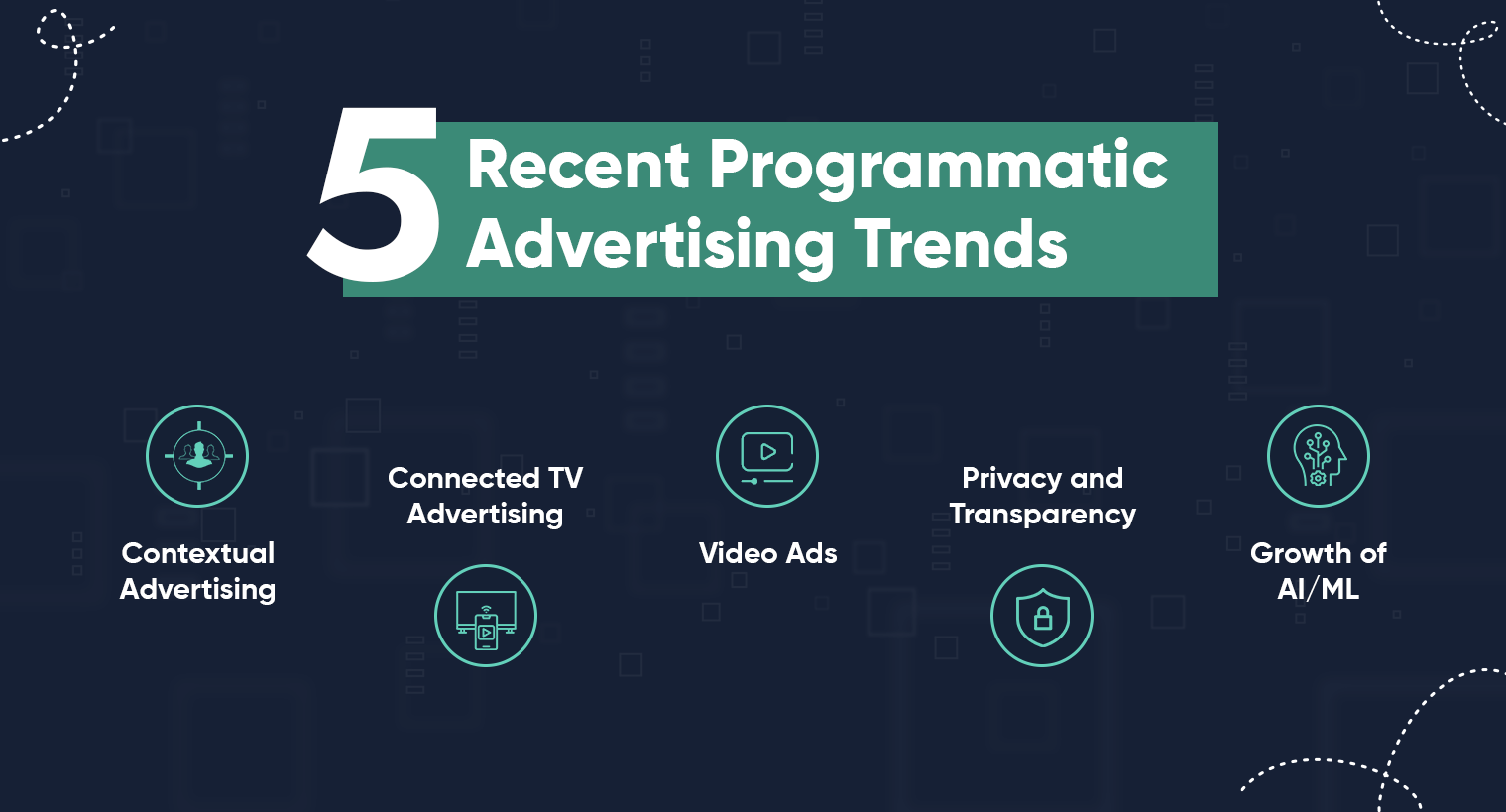
1. Contextual Advertising Stands Strong
Contextual targeting is a straightforward yet powerful method of advertising that continues to be a key programmatic trend to watch, particularly in light of the decline of cookies. In digital advertising, contextual targeting is becoming increasingly important as ads are placed based on the context of the website, rather than relying on a user’s online behavioral data.
With contextual targeting, advertisers can reasonably assume that those who see their ads are more likely to be interested in them due to the web page’s context. As users have grown weary of seeing irrelevant ad creatives in inappropriate locations, banner blindness has become more prevalent. To address this, advertisers must enhance the ad experience by using personalized and relevant ads in the right context, thereby improving engagement and driving better results.
Also read: https://www.silverpush.co/blogs/what-is-programmatic-advertising/
2. Connected TV Advertising Continues to Grow
Connected TV usage among millennials is expected to grow from 60.5 million monthly users in 2022 to 62.6 million by 2025.
Prior to Covid, 76% of U.S. households had at least one connected device, with a total of 12.5 billion use hours per month. Following the pandemic, this figure increased by 81%, resulting in 4 billion hours of CTV use every week.
As a result, buyers are planning to allocate more of their advertising budget to CTV in 2023, with IAB reporting that ad spend is being reallocated from broadcast (53%) and cable TV (52%) advertising to CTV.
This makes CTV one of the most intriguing programmatic advertising trends to watch in 2023. Advertisers must pay close attention to the procurement process, methods, and measurements that need to be reevaluated in response to this trend. Although CTV advertising is still in its early stages, those who adapt and stay ahead of the curve will benefit from the rewards.
3. Video Ads
The popularity of video content continues to soar, with video consumption expected to account for 82% of consumer internet traffic this year. As a result, video ad spending is projected to increase year after year. In 2021, programmatic video advertising spending in the United States reached an estimated 52.17 billion U.S. dollars, and this figure is expected to grow even further to reach 74.88 billion dollars by the end of 2023.
Notably, video advertising is considered to be the most impactful format for high-impact display ads, contributing to the growth in programmatic video spend. Given that programmatic video spending is expected to represent the majority of total programmatic digital display spending in the US this year, it’s clear that automated video ad buying has become the standard approach for distributing digital video commercials.
4. Growing Need for Privacy and Transparency
As privacy and transparency become top priorities, marketers must adapt to a world without third-party data. With the rise of new privacy laws like GDPR and the California Privacy Act, traditional tracking methods are no longer viable. While advertisers can still obtain user data with their consent, relying solely on tracking cookies to target and personalize ads is no longer an option. The recent moves by Apple, Firefox, and Google to end third-party cookie support further emphasize the need for innovative and reliable workarounds in programmatic advertising. At this critical juncture, it’s time for marketers to prioritize transparency and build trust with their audiences by adopting new, privacy-first strategies.
5. Use of AI/ML Rapidly Expands
The rise of Artificial Intelligence and Machine Learning (AI/ML) is revolutionizing programmatic advertising by enhancing targeting, optimization, and prediction capabilities. By leveraging AI algorithms, brands can now automate and optimize their ad-buying process to ensure that their messages reach the right people at the right time.
As AI and ML technologies continue to advance, programmatic advertising platforms are incorporating these tools to improve ad targeting, creative optimization, and budget allocation in real time. With AI/ML-driven automation, brands can create personalized experiences for each customer, as seen in Overstock’s successful implementation of AI for individualized customer experiences. The increasing use of AI/ML in programmatic advertising is paving the way for more efficient and effective ad campaigns, providing brands with a competitive edge in the digital marketing landscape.
Conclusion
Programmatic advertising is an ever-evolving field that requires constant attention and adaptation to stay ahead of the curve. From the growing need for privacy and transparency to the increasing use of AI and Machine Learning technologies, these five programmatic advertising trends are transforming the digital advertising landscape. As programmatic advertising continues to evolve, it’s crucial for brands to stay up-to-date on the latest trends and developments. By doing so, they can ensure that their advertising campaigns remain relevant, engaging, and effective in today’s rapidly changing digital marketing landscape.
Study Reveals 40% of Marketers Anticipate Rise in Brand Safety Concerns
PUBLISH DATE: 20 February 2023
Mediaocean, a major multi-channel advertising platform, has recently published its 2022 Market Report and 2023 Forecast report, which highlights the ongoing worries about the safety and appropriateness of media environments.
According to the report, more than half of those surveyed anticipate their brand safety concerns to remain the same in the coming year, while almost 40% expect these worries to rise in 2023. Only a small percentage of respondents expect these concerns to diminish.
Brands have become increasingly worried about brand safety, with 75% of them experiencing a brand safety incident within the last year.
As the concerns about brand safety continue to rise, it raises the question of how brands can address these concerns and ensure brand safety and suitability on platforms such as YouTube, social media, and the Open Web. Let’s find out!
What are the Key Considerations to Ensure Brand Safety?
It is a fundamental aspect of human behavior to make judgments about people based on their company, and the same applies to brands and products. Whether intentionally or subconsciously, consumers evaluate brands based on the content that they associate with. Therefore, brands must safeguard their online image by utilizing sophisticated hyper-contextual targeting solutions.
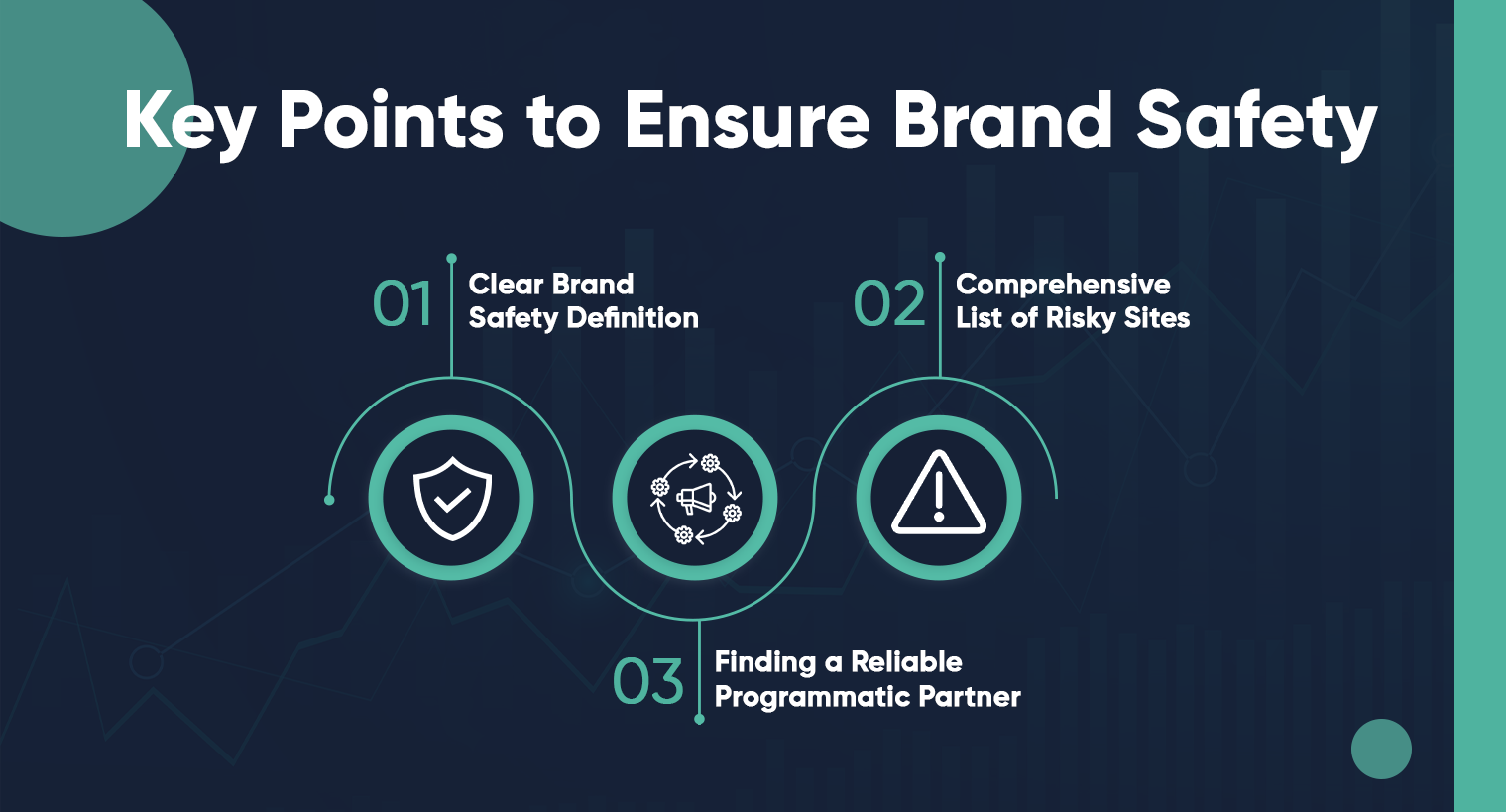
Here are four essential factors that brands should consider to safeguard their image:
1. Develop a Clear Definition of “Brand Safety”
To implement brand-safe advertising, it is crucial to establish a set of guidelines and parameters that everyone within the organization can agree on. It is important to craft a clear definition of what constitutes brand-safe content and what is considered risky or unsafe. Examining industry-standard definitions of brand safety can serve as a good starting point.
2. Create a Comprehensive Blocklist of Sites
A blocklist is a list of websites or content that you do not want your ads to be displayed alongside. It is also referred to as a negative targeting, exclusion list, or blacklist. Maintaining an updated document of blocklisted sites is essential to exclude any undesirable topic, content, or website that may be detrimental to your brand’s image. By doing so, you can ensure that your ads are only displayed on sites that align with your brand’s values and messaging.
3. Choose a Programmatic Partner that Prioritizes Brand Safety
Selecting the right programmatic partner is crucial to ensuring that your brand remains safe online. At Silverpush, our AI-powered contextual solutions are specifically designed to address brands’ concerns about online advertising without sacrificing reach.
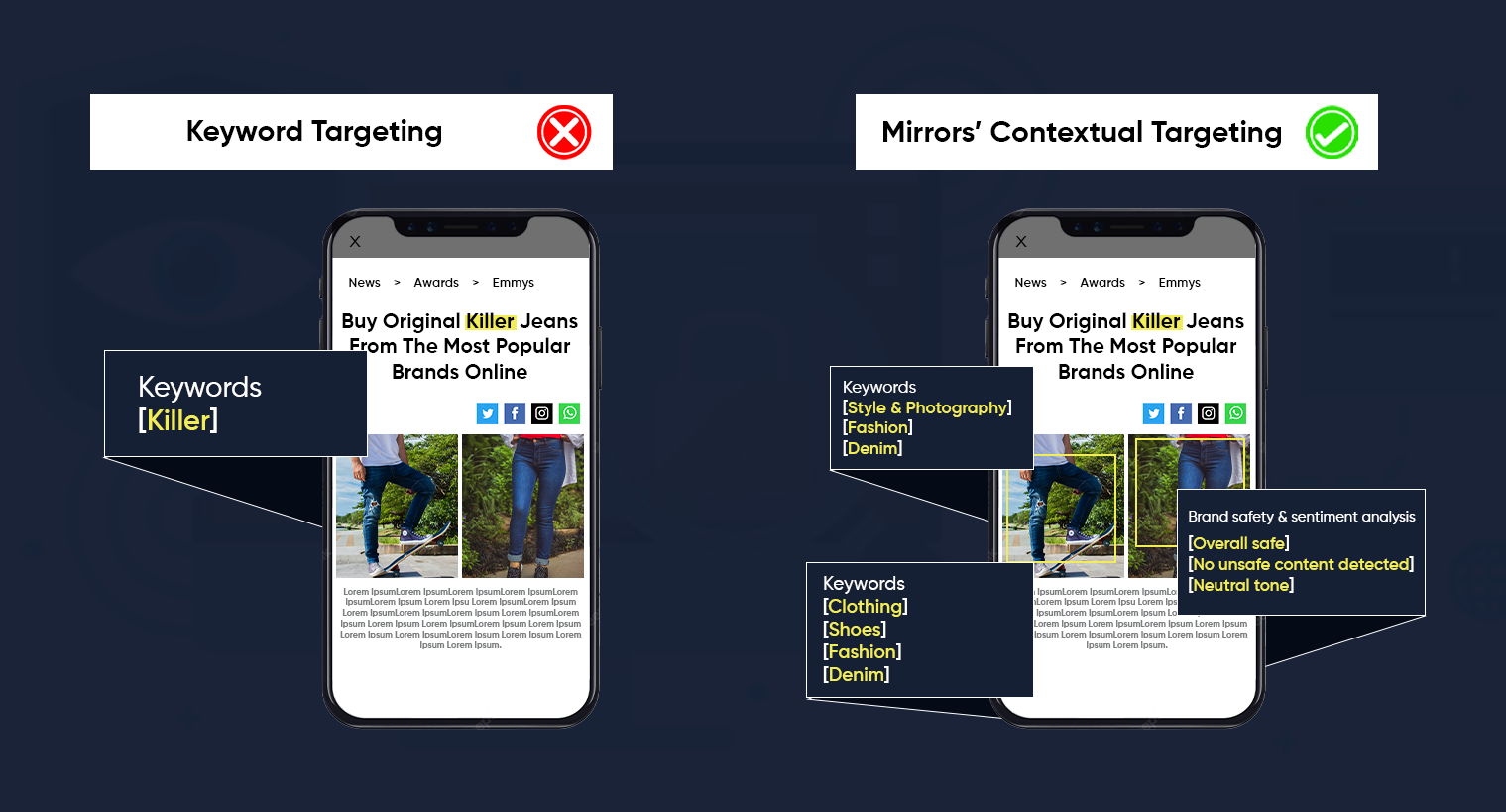
How does our brand safety strategy work?
Mirrors’ deeply trained proprietary AI models identifies custom-defined unsafe contexts in content to contextually filter content. These placements are classified into many levels of content, including smoking, adult, violence, wrecks, arms, terrorism, and others.
4. Monitor your Campaigns Closely
Digital advertising allows you to track your results in real time, enabling you to identify and address any brand safety concerns promptly. Keep a close eye on your campaigns to identify any potential bot traffic or fraudulent activity. If you spot any issues, make necessary adjustments to your campaign settings to safeguard your brand’s reputation. Monitoring your campaigns is crucial to ensuring that your ads are appearing in safe and suitable environments, which is essential to maintaining a positive brand image.
Why is Brand Safety Important in Advertising?
Brand safety in advertising is critical to maintaining a positive brand image and protecting brand equity. In a recent survey, 90% of consumers stated that they believe brands are responsible for ensuring that their ads appear alongside safe content.
Consumers view the content their favorite brands appear alongside as an implied endorsement of that content. Negative associations can damage a brand’s reputation and have long-term effects on its equity. Therefore, brands need to prioritize brand safety in advertising to ensure that their ads are only displayed in suitable environments that align with their values and messaging.
Here are a few pointers on why brand safety is important in advertising:
1. Establishing a Positive Brand Reputation
Maintaining a good brand reputation is essential for the success and long-term viability of a business. Consumers are more likely to interact with a brand when its ads appear next to legitimate and appropriate content. A study found that 61% of users believe that both the brand and the hosting platform share equal responsibility for keeping content safe. Failure to prioritize brand safety can result in consumers losing trust in the brand and stopping its use.
2. Making a Strong First Impression
For new or smaller brands, a single incident of their ads appearing next to fake news or offensive content can significantly damage their reputation and credibility. Even established brands may suffer losses in ad revenue and potential negative associations when their ads appear next to inappropriate content. Therefore, brands must prioritize brand safety in their advertising efforts and take proactive measures to ensure that their ads only appear next to suitable and reputable content.
Safeguard your Brand Image with Silverpush’s Hyper Contextual Solutions
In today’s digital landscape, brand safety is crucial for maintaining a positive brand image and avoiding potential reputational damage. Silverpush, one of the leading tech companies understands the importance of safeguarding your brand and has developed advanced contextual advertising solutions to help ensure brand safety and drive maximum ROI.
Our AI-powered Mirrors identifies key contexts and filter custom-defined unsafe contexts in streaming video, allowing us to classify videos into different levels of content safety. We also use text and sentiment analysis, engagement metrics, and organic influence to ensure brand suitability.
Partnering with a programmatic partner like Silverpush that prioritizes brand safety can help you maintain your brand’s reputation and build trust with your audience. Contact us today to learn more about how we can help you protect your brand image and achieve your business goals.
The Cookieless Future: How to Thrive in the Life After Cookies?
PUBLISH DATE: 08 February 2023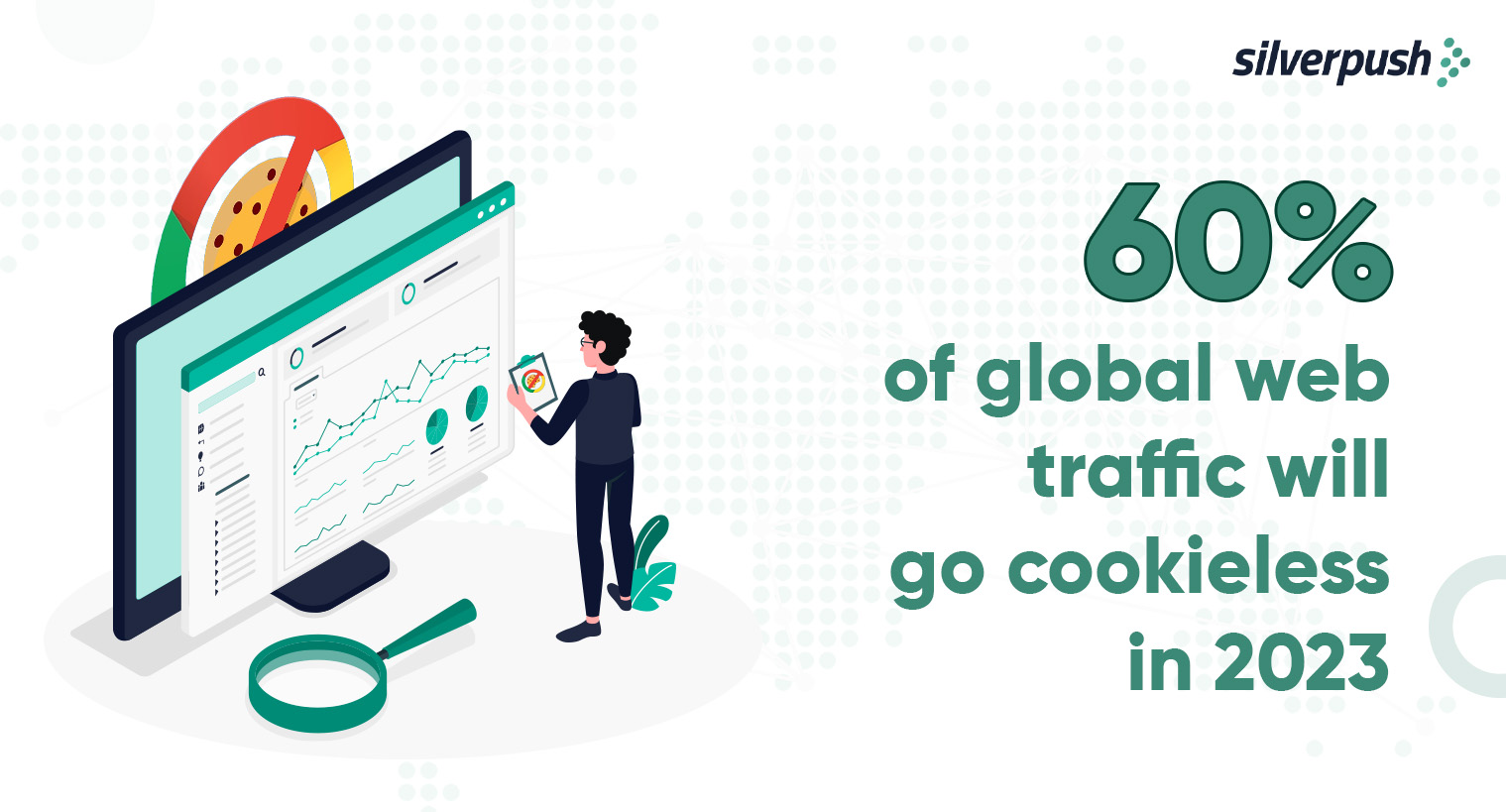
With 60% of global web traffic going cookieless by 2023. Advertisers are still not clear on how to navigate the landscape in the cookieless future. Silverpush’s AI solutions will help fill this gap by providing alternative targeting methods to advertisers & publishers.
Going back to 1992, the year when Netscape made a significant impact in digital history by inventing cookies, allowing websites to save user information and preferences.
This marked a turning point for the digital advertising industry which experienced a revolution as cookies soon became the lifeblood of the online ecosystem. The digital advertising market is currently worth $681.39 billion, and cookies play a major role in its rapid expansion.
As we move forward to 2023, third-party cookies have become a menace for advertisers and publishers who are now looking for alternatives to reach their audience with cookieless advertising solutions.
What Does the Removal of Third-Party Cookies Mean for Advertisers and Publishers?
Today, 86% of US marketers rely on third-party cookies to gain information about user behavior. The impending elimination of third-party cookies presents a major challenge for advertisers to effectively track user behavior and deliver personalized ads.
This change has the potential to negatively impact the digital advertising industry, reducing its efficacy. Publishers will also face difficulties in monetizing their websites, potentially leading to a reduction in the quality of online content as they explore alternative revenue streams like subscriptions or paywalls.
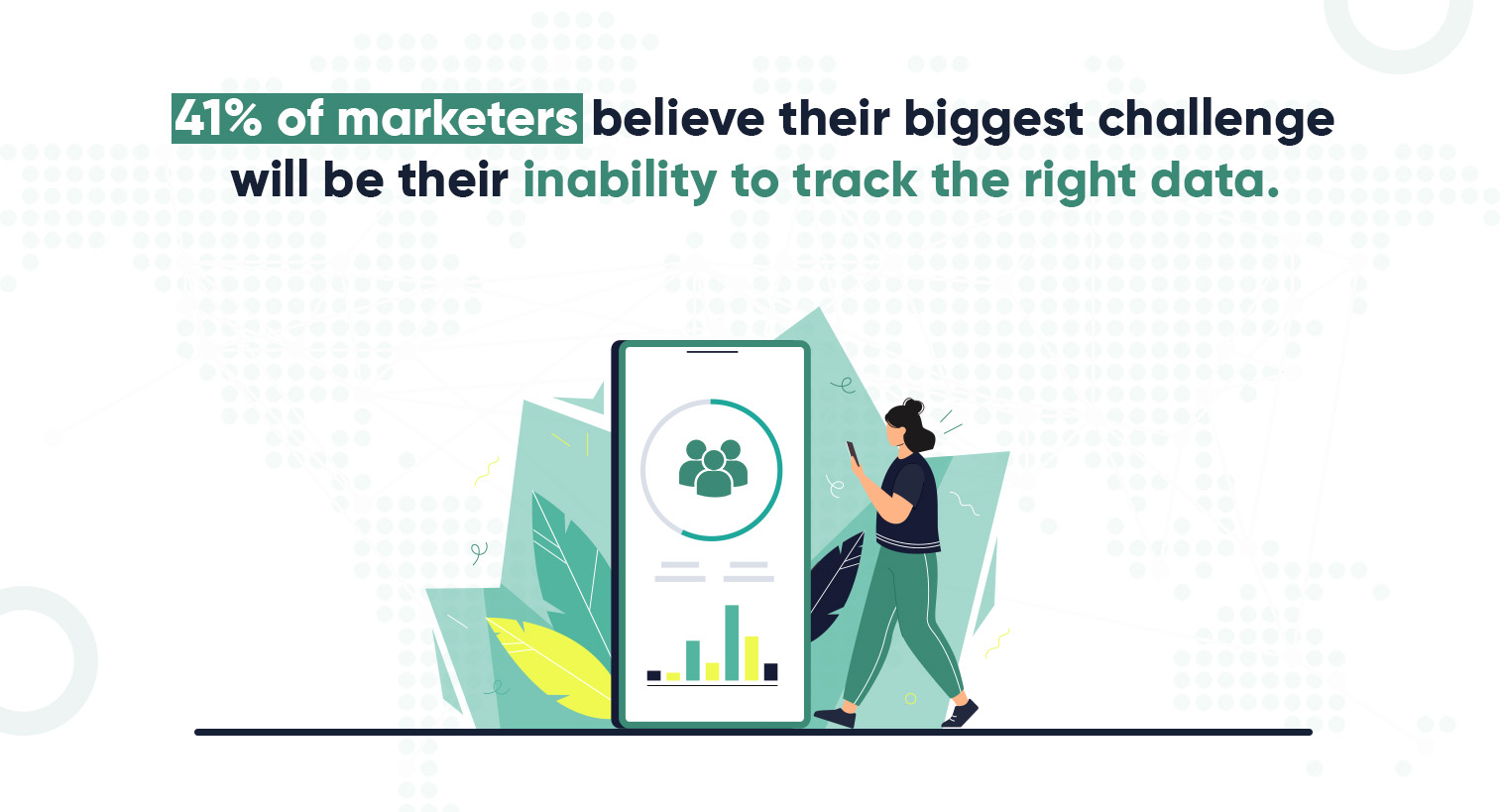
Despite the growing privacy concerns of consumers, personalization remains a priority for them. Marketers must find new solutions to provide personalized experiences without relying solely on third-party cookies to avoid a decrease in ad revenue.
As a marketer, it’s crucial to stay informed and explore new solutions to navigate this shift successfully. This blog will provide answers to your questions on how to adapt to this change.
What Does Cookieless Future Mean?
The cookieless future or cookieless world refers to the ban on third-party cookies. The decision to ban third-party cookies was initiated by Safari and Firefox and later adopted by Google.
The phase-out of third-party cookies by Google, originally scheduled for 2022, was postponed to 2023 and has now been further delayed to the second half of 2024. Take a look at the timeline of third-party cookie depreciation and how Google has again pushed back its deadline, this time to 2024.
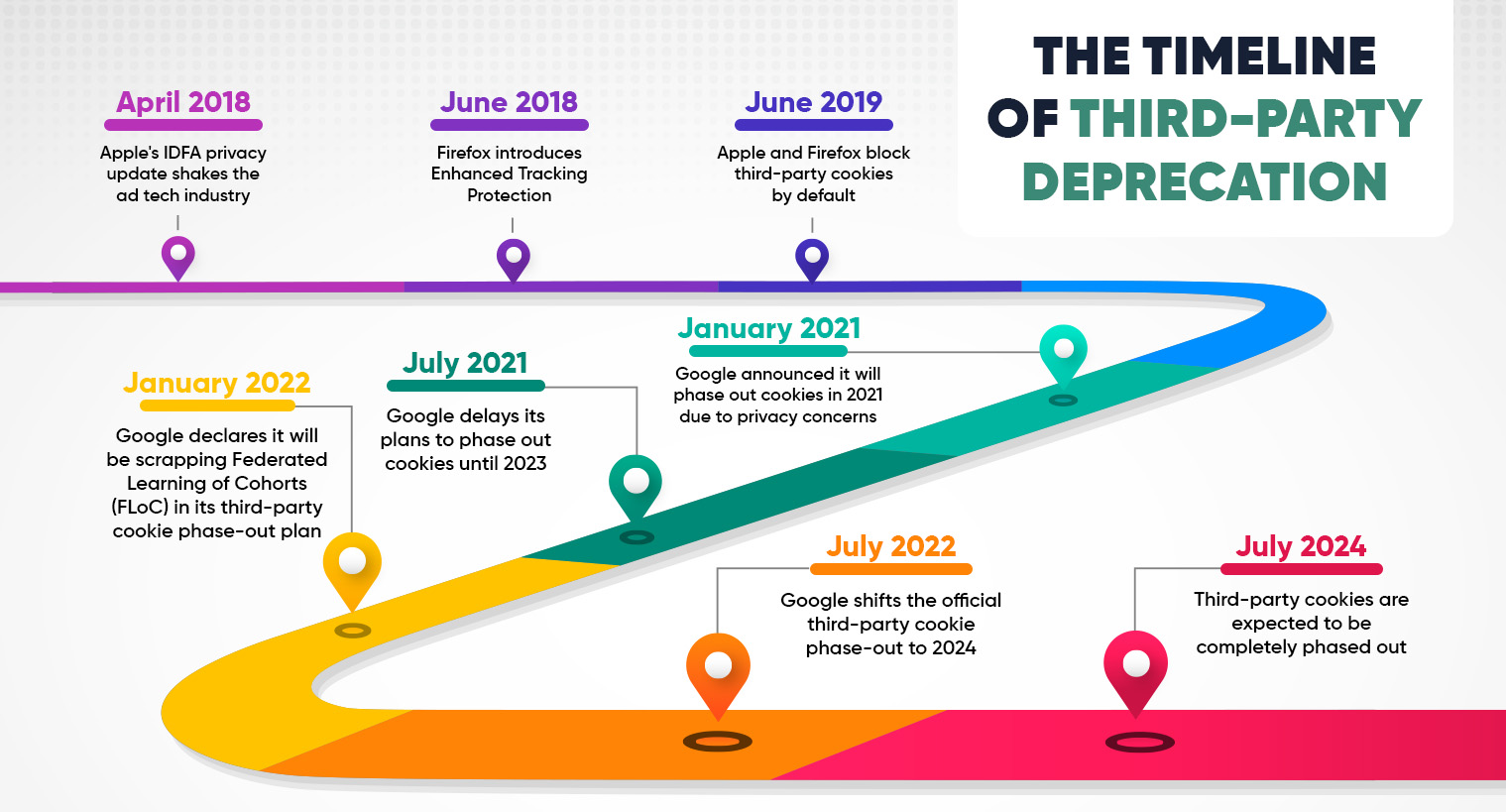
This shift in the digital landscape is driven by privacy concerns and will have a significant impact on advertisers and marketers who rely on cookies to gather information about their target audience.
In the cookieless future, advertisers will need to find third-party cookie alternatives for personalization and targeting, such as through first-party data and the use of privacy-focused advertising methods like contextual advertising.
They should also consider investing in the development of new data sources and technologies and prioritize transparency and user privacy.
To prepare for this change, advertisers and marketers should stay informed about industry developments and new regulations in privacy and data usage.
What Will Happen in a Cookieless World?
An immediate impact of a future without cookies will be seen in the size of third-party audiences, causing a decrease in their viability for media buying.
As a result, marketers will face lower conversion rates and ineffective targeting.
To counteract this impact, marketers must devise innovative audience analysis techniques and utilize alternative marketing methods such as email marketing.
In the wake of phasing out third-party cookies, businesses and marketers need to shift to advertising industry’s next big step – contextual targeting as much as possible.
Contextual targeting strategies could prove crucial to successfully personalize experiences throughout the customer journey while ensuring data security and relevant, targeted advertising opportunities.
Also read: https://www.silverpush.co/news/what-does-life-after-third-party-cookies-look-like/
How Can Marketers Prepare for a Cookieless Future?
As the use of third-party cookies faces imminent extinction, the advertising industry has been actively searching for alternative solutions. Despite the availability of various options, each comes with its own limitations. Here are some of the top substitutes for third-party data to drive your digital marketing efforts:
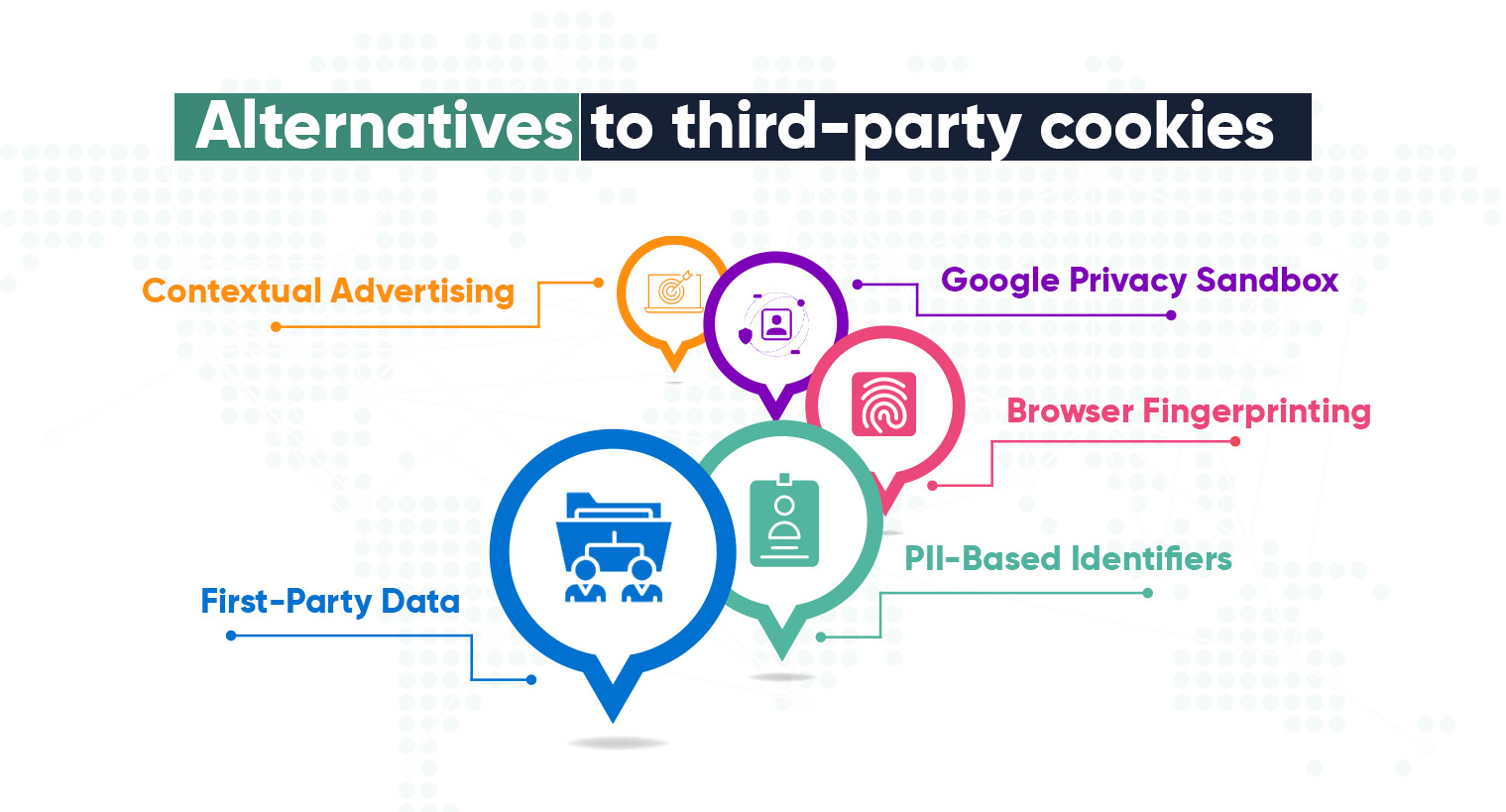
1. First-Party Data
This targeting method also uses cookies, enabling similar targeting capabilities. However, first-party data strategies only track a consumer’s activity within the website that has implemented them.
For instance, if a consumer returns to Pepperfry.com, the site will recall the furniture they previously viewed, but that furniture won’t follow that person to other sites.
This approach allows marketers to target ads to consumers effectively on their own websites without tracking them beyond their platforms. While some customers may appreciate the personalization, collecting first-party data may still feel intrusive to those who are simply browsing and don’t want to feel followed.
2. PII-Based Identifiers
Using personal identification information such as email addresses or phone numbers, marketers can track users across different devices. This is in contrast to cookies, which do not typically transfer between desktop and mobile. With PII-based identifiers, a site can recognize when a previous user has returned by recognizing an ID generated from a login or other site action. This ID does not link to any personally identifiable information, but instead to the user’s online behavior.
3. Browser Fingerprinting
This technique identifies a device and user by assessing various attributes of a device through the browser. This includes browser type, operating system, active plugins, timezone, language, screen resolution, and settings. While browser fingerprinting can accurately identify the same user across interactions, it is not 100% certain.
4. Google Privacy Sandbox
Google Privacy Sandbox, which is still in its early development stages, aims to provide advertisers with anonymized information through the use of five application programming interfaces (API) in Chrome’s browser instead of cookies. This will limit the amount of information available to marketers while allowing individual users to remain anonymous.
5. Contextual Advertising
Contextual advertising is the only option that does not involve any surveillance. Instead of focusing on consumer identity, contextual advertising displays advertisements next to content that is relevant to the ads.
Which one would you like better? Viewing an ad for sports shoes while reading an article about Jeff Bezos (because a few days back you were scrolling through the internet searching for gym shoes) or, coming across an ad for sports shoes while reading an article on fitness.
Definitely, the latter! Because it is relevant to the content they are currently engaged with.
By targeting interests rather than individuals, contextual advertising is a smart option for advertisers to target consumers in the imminent cookieless future.
Ad tech companies like Silverpush are at the forefront of the shift towards a more privacy-focused and cookie-free future, thanks to advancements in contextual technologies.
Silverpush Will Help You Thrive in Cookieless World
Silverpush saw the flaws of third-party cookies years ago. Since, they’re not people-based, not transparent, and can’t identify people over time they never needed it to help their clients reach their relevant audience.
Silverpush, a contextual advertising company has always known that the key to reaching the relevant audience is through contextual targeting.
That’s why we built our AI-powered solution – Mirrors in 2012. Initially, we offered our contextual advertising solutions only on YouTube. Now we have expanded our technology to OpenWeb, Meta, and CTV.
Mirrors privacy-safe and contextual targeting solutions are a rescuer in the cookieless world. Personalized ads are delivered to the audience with zero dependencies on their data. Most importantly, the placement of ads is done in a completely brand-safe environment with relevance to a particular brand.
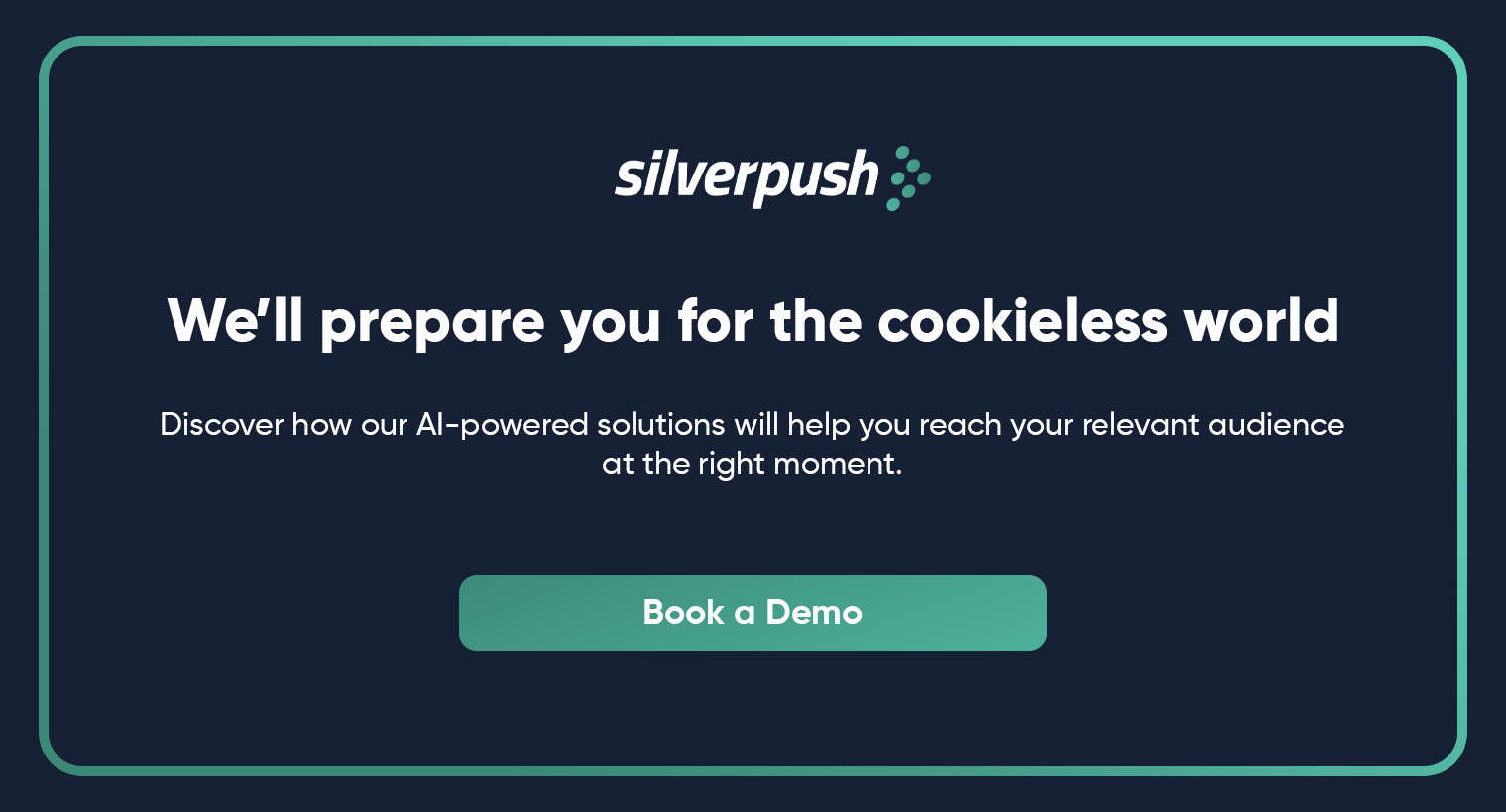
Super Bowl Advertising: A Month-Long, Multi-Screen Event for Brands
PUBLISH DATE: 30 January 2023
For Americans, there are two events that they hyped for a whole year – Football season, and waiting for football season. Football remains highly popular among Americans, with searches for “NFL Draft” and viewership numbers showing an unwavering interest in the sport. According to Google Search data, football is more popular than any other sports league in the US. Despite the challenges faced by the sport this year, the NFL’s popularity continues to rise, with Nielsen data showing a steady increase in viewership over the past decade, outperforming the top 10 network shows.
The upcoming Super Bowl in February is expected to attract a large audience, making it an attractive opportunity for brands to invest in marketing. Historically, brands have focused on airing expensive commercials during the game, but as consumer behaviors change, the window of opportunity for brands has expanded. As a result, more brands are taking advantage of this opportunity to reach a larger audience.
Super Bowl Ad Cost History
The Academy Awards show is the only event that comes close to having the largest TV audience in the US, but the NFL’s Super Bowl remains the largest TV spectacle, both in sports and the country. Despite some decline in certain areas, the Super Bowl is still considered the ultimate advertising platform by brands and attracts many companies to showcase their products and services.
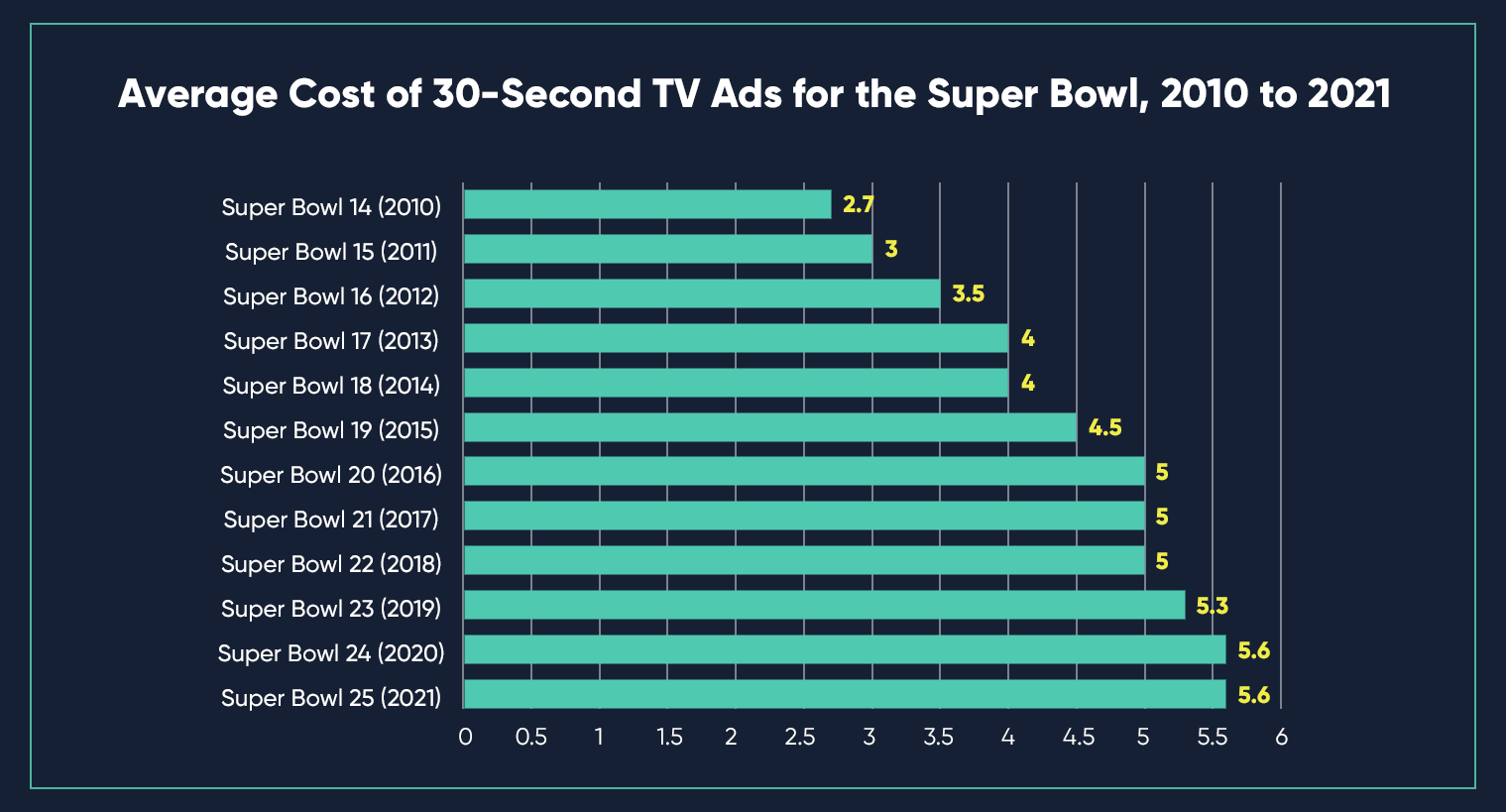
Reaching the Right Audience has Never Been Easier
As the Big Game approaches and signals the end of the NFL season, advertisers are eager to take advantage of one of the year’s largest TV events, attracting over 100 million viewers annually. Despite a decline in overall viewership last year, the game broke the record with 1 billion total streaming minutes, signaling a shift in the way people watch the event. The entire week presents a major opportunity for advertisers to reach a vast audience across all devices, balancing the reach of linear TV with the convenience of streaming.
Focus on the Task Ahead
Advertisers should take advantage of the fact that viewers don’t just watch the game, but spend the whole weekend consuming related content and updates. This includes the pre-game show, city festivities in Los Angeles, team interviews during media week, and more, providing multiple touchpoints for advertisers. With the extended amount of time, advertisers can reach their target market through various streaming channels, including phones and other devices, expanding beyond just TV viewership.
Achieve More with Less
Advertising during the Big Game is costly, with NBC reported to charge up to $6.5 million for a 30-second spot. However, businesses can still reach their target audience at a lower cost through CTV advertising. CTV ads can be targeted based on online behavior, allowing them to reach the intended audience even if they’re not watching the game.
Targeting Relevant Audiences with Geo-Fencing During the Big Game
Advertising during the Big Game offers a unique opportunity to target relevant audiences through geo-fencing. Advertisers can reach users who have taken action to be at locations such as the stadium, team hotels, host city, and other events related to the game. These audiences are highly engaged, and advertisers can retarget them during and after the game, even across all devices in their household. With granular reporting and attribution, brands can track online and offline conversions and see the impact of each individual geofence from the Big Game weekend.
CTV campaigns offer a chance for advertisers to reach relevant audiences with high-impact ad campaigns. During the big week, many advertisers struggle to stand out, but those using a programmatic platform are better equipped for success. The number of people streaming the game is rising, and fans will be using multiple devices, providing advertisers with opportunities to reach their desired audiences. Real-time reporting also provides insights into campaign performance, allowing advertisers to quickly adjust and allocate budgets to higher-performing channels and markets. Every advertiser has a chance to participate in TV’s biggest event.
Complete Guide to Reaching Audience with Cookieless Advertising
PUBLISH DATE: 19 January 2023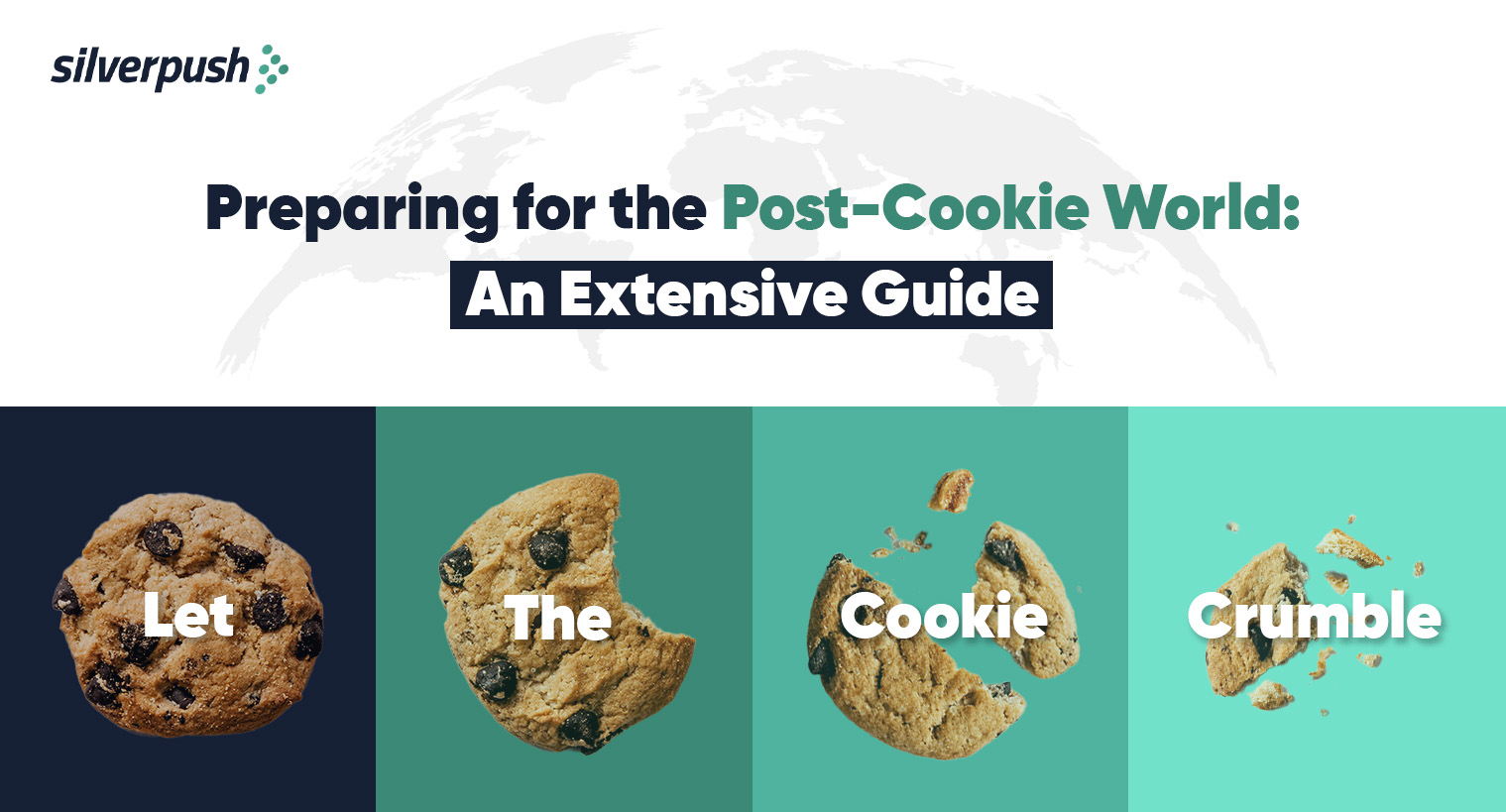
What’s your alternative game plan for effective cookieless advertising? Haven’t thought about it yet? The time is now!
Introduction
The complete year of 2022 was dedicated to cookies! Panic is setting in amongst marketers owing to mounting privacy laws and the ban on cookies, causing them to re-evaluate their strategies.
The year 2023 will be no different! New privacy legislation went into effect on January 1, 2023, in California, Virginia, Colorado, Connecticut, and Utah. It is just a matter of time before further laws are enforced.
Google has announced that it will continue to phase out third-party cookies on Chrome by the end of 2024, ultimately putting an end to two decades of media and data-driven performance-focused advertising.
As the cookieless era looms on the horizon, it’s vital to be proactive in preparing for advertising in a cookieless world. Our comprehensive guide provides in-depth information on how to target your audience without the use of cookies effectively.
In this Guide we’ll Cover:
1. How Does an Ad Get to You?
2. Where do Third-Party Cookies Fit in this Ecosystem?
3. Reasons Behind the Phase-Out of Third-Party Cookies
4. Was the Ban on Third-Party Cookies a Good Decision?
5. What is Cookieless Advertising?
6. Things to Consider While Creating a Cookieless Advertising Strategy
7. What Makes Contextual Targeting an Effective Alternative to Cookieless Advertising?
8. Role of Mirrors’ Contextual Solutions in a Cookieless World?
How Does an Ad Get to You?
Have you ever wondered how an ad actually gets to you when you are:
- Watching a YouTube video
- Reading a news article online
- Playing games on an app
- Browsing through Instagram or Meta
Well, here we bring an end to your curiosity!
In the blink of an eye, the ad space on the page that hosts the platform (you opened) is provided to a network of hundreds of advertising technology companies to see who wants to buy the space at that time on your browser.
After analyzing the context of the page, (if you are reading FIFA-related news) the advertising partner understands from the context of the site that you like football.
Or maybe, it’s Indigo Airlines trying to reach you regarding a flight to Mumbai. They observed your browser searching for flights to Mumbai and shared that information with their advertising partner.
Those advertising partners define min/max bid requirements for their algorithms based on each advertiser’s willingness to pay. Then, depending on the specifications provided by the clients, their algorithms bid directly.
Also Read: Contextual Advertising: The Advertising Industry’s Next Big Step
Where do Third-Party Cookies Fit in this Ecosystem?
Before we go any further, it’s crucial to understand the basics of cookies and how third-party cookies differ from first-party cookies.
What are Cookies?
Cookies are data blocks (sometimes known as little text files) that are generated when a user views and navigates a website. These data blocks retain information in the user’s browser and can recognize the user on future visits.
What is the Use of Cookies?
Cookies enable advertisers to display personalized ads by storing users’ information.
What’s the Difference Between Third-Party and First-Party Cookies?
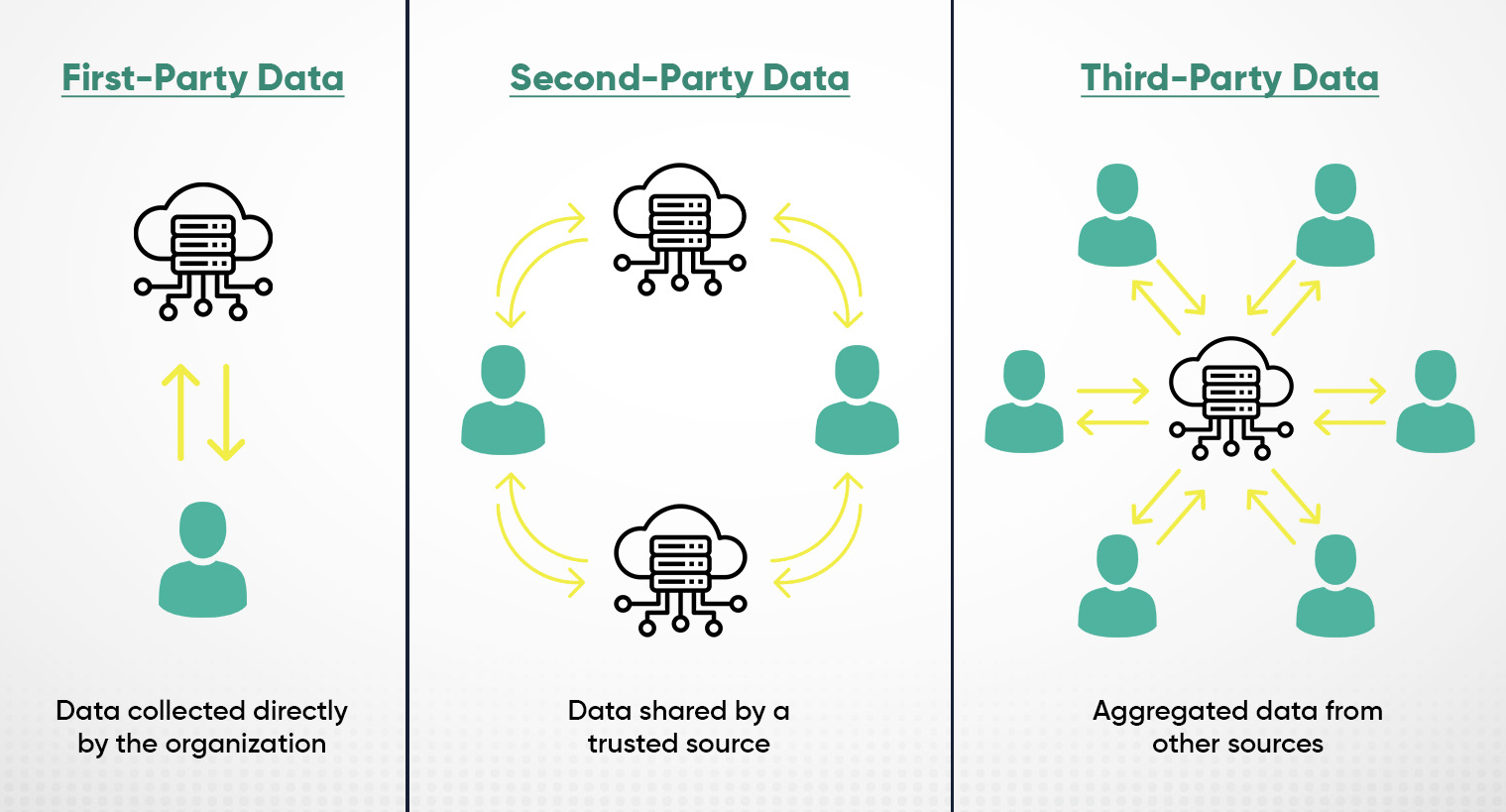
Third-party cookies are set on websites that come from somewhere else. Have you ever looked up a pair of shoes and then seen the same shoes in a few different ad positions on other websites?
This is a prime example of third-party cookies at work. Essentially, third-party cookies are used to track users across multiple sites and target them through ads.
They work in the same way as first-party cookies. They let a firm save a unique ID about the browser, allowing that company to keep track of items you like, have looked at, and so on. When the domain owner “invites” the firm to read or drop a cookie on that browser, this occurs.
First-party cookies, on the other hand, are cookies produced by the host domain and allow a business to enhance the user experience.
For example, first-party cookies store your items in your shopping cart and keep your login information so you don’t have to log in each time you visit a website.
The goal is to assign a unique ID to that browser so that the site owner may track things like:
1. Login Status
To make the site easier to use. Eg. Facebook keeps users signed in for up to 90 days.
2. Past Interests
Newspapers frequently alter sites to highlight essential information for certain users (for example, YouTube also puts music videos on top for me).
3. Purchase Histories
Indigo Airlines may keep track of the fact that you have been browsing for pricing on tickets to Mumbai and have Delhi as the destination filled in for you when you return in an effort to identify the sort of things you enjoy. These are all instances of data associated with first-party cookies, or cookies set directly by the site owner.
Reasons Behind Phase-Out of Third-Party Cookies
Privacy, please? This sentence has been repeated by users for a long time now.
According to data, 66% of consumers said that they were uncomfortable with businesses and brands tracking their browsing history to show them personalized ads.
Originally, third-party cookies were designed to store information under the control of end users anonymously. However, ad tech firms misused the opportunity to collect and link datasets for personalized targeting, leaving consumers worried about their privacy.
Brands use cookies to monitor website visitors, improve user experience, and gather data that allows brands to deliver ads to relevant audiences.
It’s also utilized to find what visitors look at while not on the brand’s websites.
Users will not compromise their privacy as we enter the next era of internet advertising. Their need for privacy and transparency into how their data is gathered and utilized has grown tremendously.
As a result, several major online browsers, including Mozilla Firefox and Safari, have already prohibited third-party cookies and Google will soon join them in this quest. Google has recently announced its Chrome’s Privacy Sandbox proposal.

Google has stated that it would not restrict third-party cookies on its browsers until the second half of 2024. This follows a few delays, mostly because Google wanted advertisers to have more time to change their advertising strategy and test new, less invasive targeted advertising technology.
“We do not believe these solutions will match expanding consumer privacy expectations, nor can they withstand fast shifting legislative limits, and hence are not a long-term investment. Our online products will instead be enabled by privacy-preserving APIs that prohibit individual monitoring while still delivering results to advertisers and publishers”, Google states.
Was the Ban on Third-Party Cookies a Good Decision?
Was the idea behind banning third-party cookies correct? Read the list of pros and cons and decide for yourself.
Pros
1. Google described the termination of third-party cookies as a vital step toward more privacy for online browsers, and it follows Apple’s April 2021 iOS update 14.5, which included a new permission mechanism dubbed App Tracking Transparency (ATT).
2. The phasing out of third-party cookies has shown how much of a publisher’s inventory is under-monetized. For example, cookieless income accounts for around 50% of a publisher’s revenue, yet many do not capitalize on it.
Cons
1. Processes for ad targeting, buying, and optimization will be disrupted and hampered, particularly for performance-based campaigns and specialized audiences.
2. As cookie data gaps weaken attribution and optimization, incrementality testing, and app-to-web tracking, current ad measurement, attribution, and optimization approaches will become peripheral or useless.
3. The phase-out has caught many advertisers, publishers, and marketers off guard. When the phase-out is formally implemented, a lack of planning might result in significant monetization concerns.
What is Cookieless Advertising?
Cookieless advertising indicates that marketers are relying less on third-party cookies. Cookieless does not imply completely cookieless. Cookies can still be tracked by digital marketing businesses in Singapore and web browsers like Google and Safari, but only with the user’s permission. As a result, the user has control over the privacy of their online data.
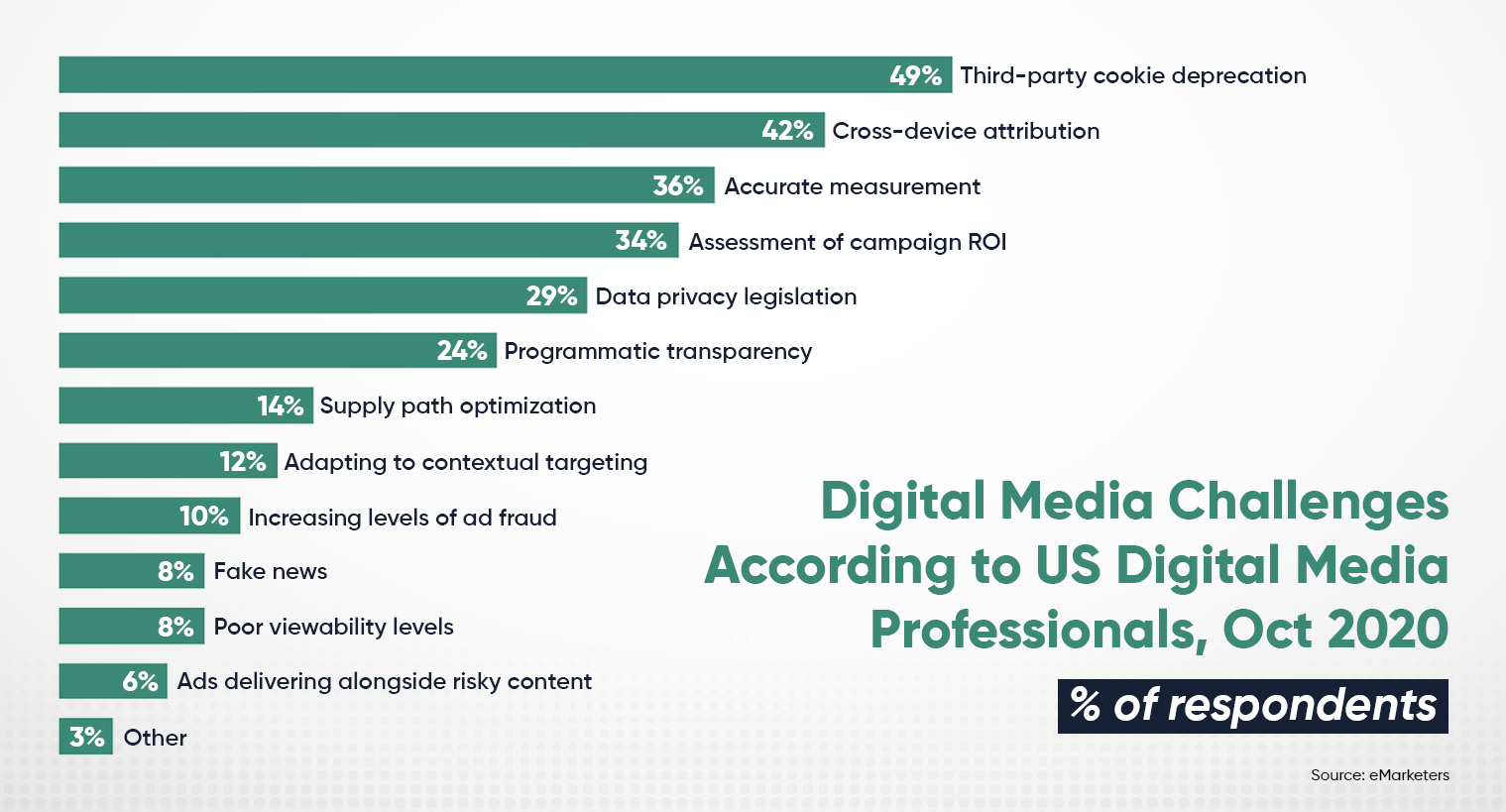
Things to Consider While Creating a Cookieless Advertising Strategy
Even if 2024 seems like a long time away, the race is on to develop viable replacements for third-party cookies. Following are some of the points that need to be kept in mind while creating a cookieless ads plan.
1. Plan your First-Party Data Strategy: If you haven’t already done so, begin inventorying and understanding where all of your first-party data resides across your organization so you can both understand gaps and assess which types of technology solutions can help you store, manage, analyze, and activate that data.
2. Plan for Greater Data Collection: Even in a cookie-free advertising future, you will need to acquire more information about your customers and prospects. Explain that when customers agree to share their data, it results in more relevant advertising and communication. You may experiment with new and intriguing data collection methods, such as quizzes, polls, QR codes, and newsletters.
3. Identify the Right Data Partnerships: You may complement your first-party data with partners that have both standard and unique data sets that you can utilize to improve your cookieless targeting. Location, weather, and buying purpose are examples of these.
4. Tailor your Targeting Strategy: By knowing the appropriate cookieless targeting criteria for the people you want to reach, you may better determine which categories to pursue and which to avoid based on safety, appropriateness, and emotion.
5. Tap into the Right Technology: There are solutions that can assist you in accessing pre-bid contextual categories to locate the best inventory to target and then activate across channels in your preferred DSP. The best is to utilize a technology that focuses on semantic comprehension, brand safety, and page quality to discover the ideal match for your ad. Know how Silverpush can help!
What Makes Contextual Targeting the Best Option to Advertise Without Cookieless?
Contextual targeting is fast becoming a future-proof, brand-safe, and successful cookieless targeting option. According to data, the global contextual advertising market is predicted to reach $376.2 Billion by 2027. Companies all across the world are redirecting their marketing resources toward developing a strong contextual strategy, as you can see from the image below.
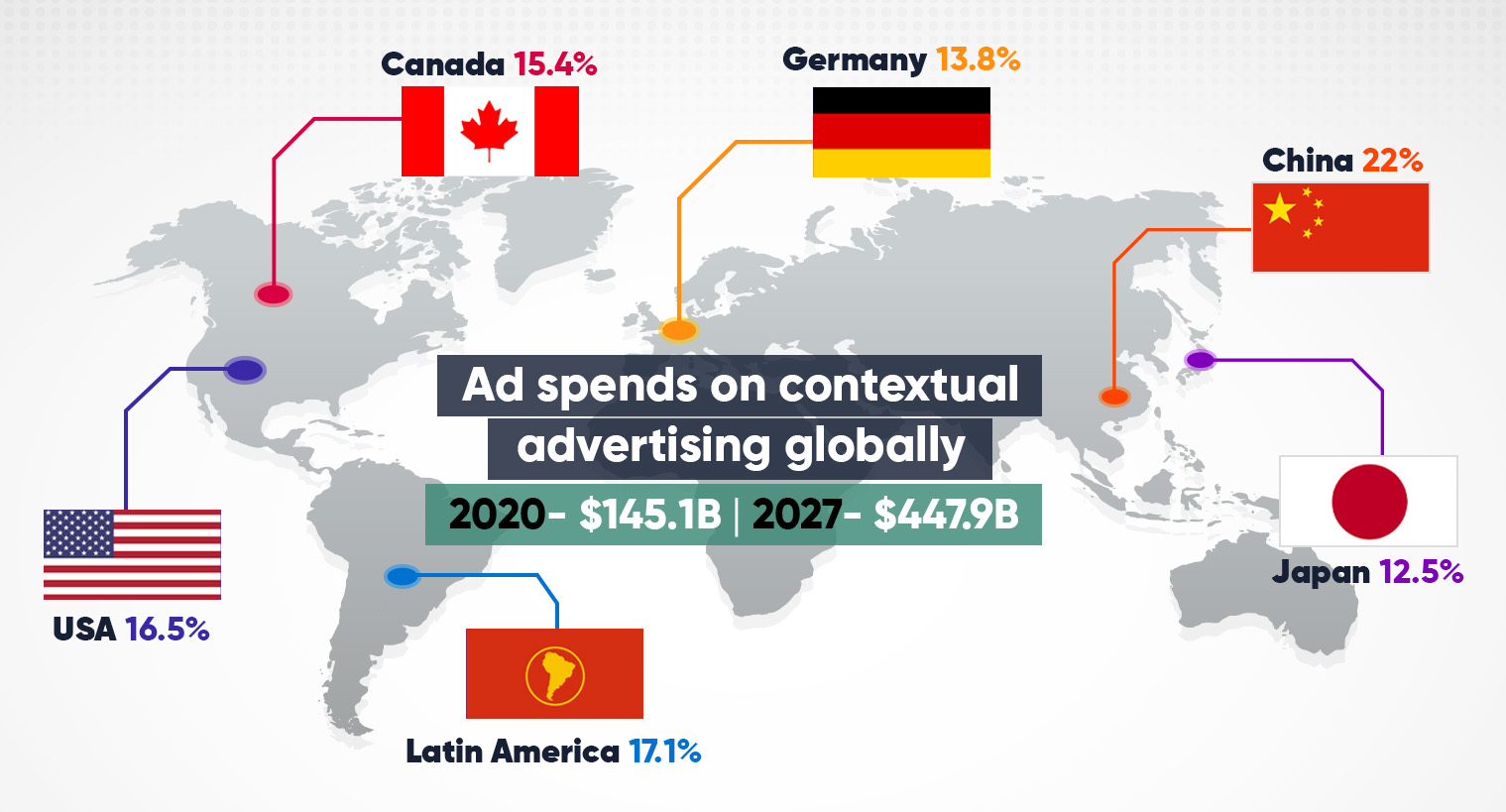
Here is why should choose contextual advertising as the preferred alternative to third-party advertising.
Statistics proving the importance of contextual advertising:
- Context is so powerful that 49% of brand marketers are looking to contextual advertising to replace cookies.
- 79% of consumers are more comfortable seeing Contextual than behavioral ads.
- Between 2020 and 2027, contextual advertising spending is expected to grow 13.3 percent annually.
- 49% of US marketers surveyed are using contextual marketing today.
- In the UK, 32% of marketers use contextual marketing, while 36% use demographic targeting.
Also read: Is Contextual Advertising a Substitute for Cookie-based Targeted Advertising?
Role of Mirrors’ Contextual Solutions in a Cookieless World?
Third-party cookie deprecation certainly marks the end of an era. But the cookieless advertising future will be bright for those advertisers who pivot to contextual targeting to engage with users. Leverage Mirrors by Silvepush’s AI-powered solution to reach your relevant audience at the right time & place without meddling with user’s privacy. We ensure complete brand safety & suitability on YouTube, OpenWeb, and CTV.
To learn more about how Silverpush can help you prepare for the cookie-less world, fill out the form available and we’ll help you advertise in a cookie-free future with our cookie-less advertising solution.


